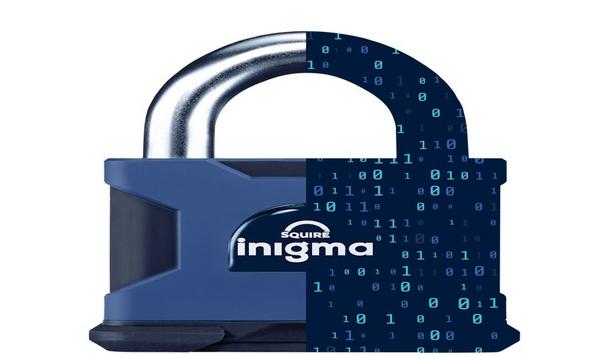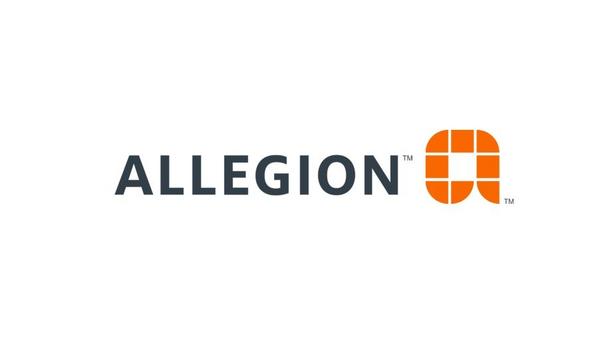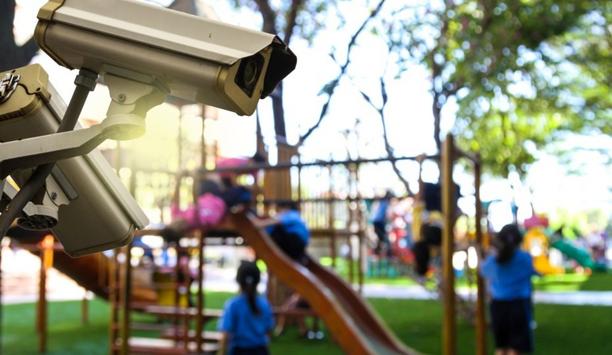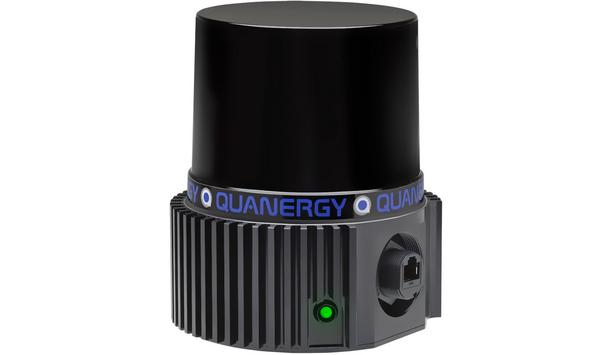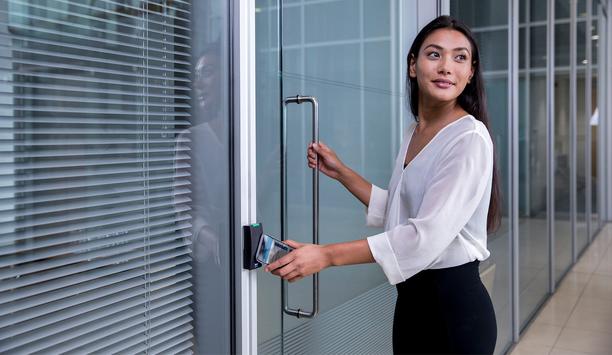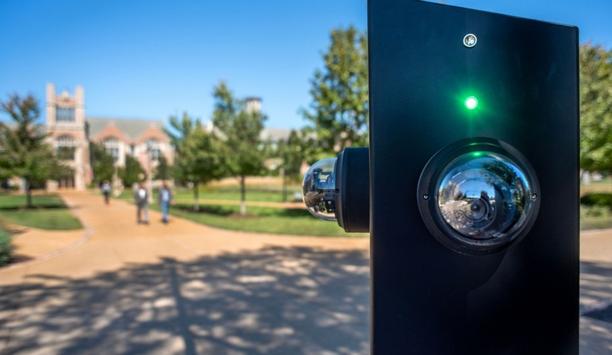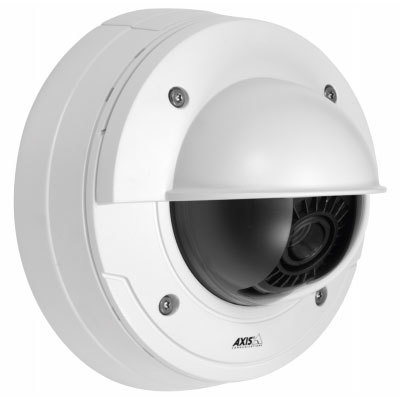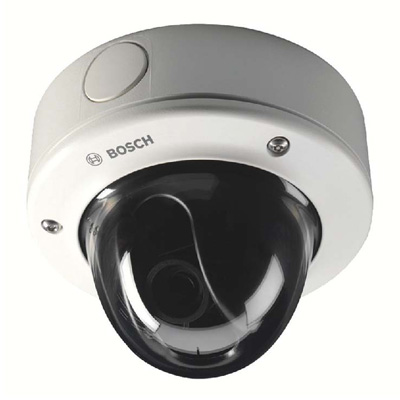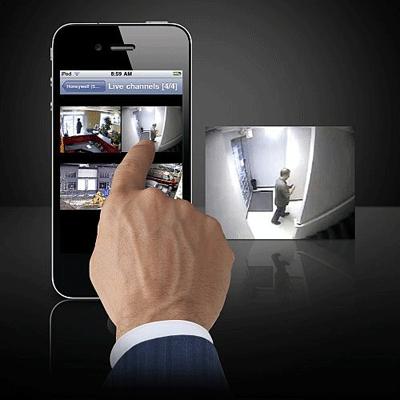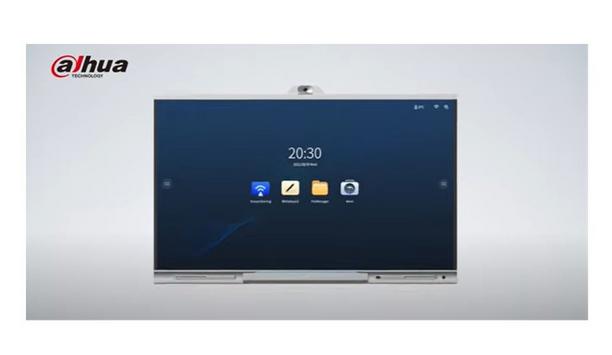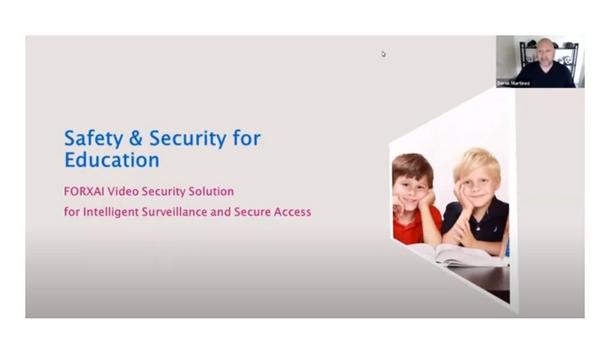Campus security systems
The revised EU Construction Products Regulation officially came into force on January 7, 2025, bringing updates to the regulatory framework for construction products. However, despite its adoption, nothing will change in the short term for CE marking and EU declarations of conformity, including those in the fire safety industry. Evolving compliance Until new harmonised technical specifications are developed and adopted - based on a forthcoming standardisation request - the existing harmonised...
Smiths Detection, a global pioneer in threat detection and security screening and a business of Smiths Group, has announced a new partnership with NeuralGuard to advance AI-driven threat detection in security screening. NeuralGuard’s AI technology is undergoing integration and certification for use with Smiths Detection’s HI SCAN 6040 2-is. This collaboration was undertaken as part of Smiths Detection’s Ada Initiative, the company’s structured framework for accelerating...
Squire Locks USA will be exhibiting its inigma smart wireless padlock system at ISC West, highlighting the brand’s latest innovation in smart security technology at booth #7056. Inigma allows users to control access to compatible padlocks via Bluetooth, using a smart key programmed through the dedicated app. This provides a smarter, more convenient way for users to manage their security. The smart key can operate multiple padlocks, even in remote locations, and system administrators...
Everon, a pioneer security integrator and premier provider of commercial security, fire and life safety solutions in the U.S. Announced that David Charney has joined the team as Sr. Vice President, Video Command Center. Expert in security tech With nearly 20 years of industry experience, Charney has established himself as a pioneer of innovation in cutting edge spaces. He has held key executive roles, including President, Chief Operating Officer, and most recently Chief Customer Officer for...
Allegion US, a pioneer in security technology, solutions and services, is proud to announce a strategic alliance with Atrium Campus, renowned for their cloud native campus card solutions for the higher education vertical. The two companies are establishing a formal partnership to revolutionise access control, credentialing, and campus one-card solutions. Together, they aim to deliver an unparalleled, seamless experience for college and university campuses. Mobile-first approach Driven b...
iDenfy, a Lithuania-based RegTech solution provider best known for its fraud prevention tools, announced a new milestone established by recognition from G2. A pioneer B2B review platform, which has named iDenfy as one of the Best Software Products of 2025. This marks iDenfy’s debut on the top 100 list, with the company securing 44th place in the Financial Services Products category and 48th place in the Data Privacy Products section. Trusted security solutions G2’s rankings...
News
Quanergy Solutions, Inc., a global pioneer in high-performance LiDAR-based security and smart space solutions, announces a technology partnership with Netsocs. An integration and automation software solution provider specialising in electronic security. Smart security with LiDAR Netsocs’s versatile and powerful management platform helps to deliver unparalleled operational intelligenceThe partnership combines invaluable data from Quanergy 3D LiDAR sensors with Netsocs’ highly versatile and powerful management platform to deliver unparalleled operational intelligence and security for large-scale enterprises with the highest levels of cost-efficiency. Netsocs flexible architecture can be deployed in the cloud under a SaaS model, on-premises, or in a hybrid environment enabling customised deployment tailored to the specific needs of each project. The SaaS model transforms the investment into an operational expense (OPEX) instead of a capital expenditure (CAPEX), allowing easy access to cutting-edge technology without high upfront costs. Real-time insights “Our collaboration with Netsocs underscores Quanergy’s commitment to innovation and market expansion,” said Gerald Becker, Vice President of Market Development and Alliances at Quanergy. “This integrated solution delivers the real-time analytics essential for proactive security and efficient business management, setting a new industry benchmark.” Next-gen security solutions Integrated solution provides actionable insights for faster decision-making, and improved operational efficiencyTraditional security and management systems often operate in silos, causing delays and inefficiencies. By merging advanced 3D LiDAR event detection, object analysis and tracking with intelligent analytics. The integrated solution provides actionable insights for faster decision-making, proactive threat detection, and improved operational efficiency—all on a scalable, customisable single pane of glass platform. “The integration of Quanergy 3D LiDAR sensors to capture high-resolution 3D data with QORTEX perception monitoring software delivers actionable insights that enhance decision-making and streamline operations," said Netsocs partner, Carlos Jimenez. “This partnership makes the implementation of 3D LiDAR more accessible and efficient, maximizing return on investment from day one.” Applications for this innovative solution include: Enhanced Perimeter Security: Real-time intrusion detection and tracking Intelligent Traffic Management: Optimised flow and reduced congestion Automated Asset Monitoring: Improved tracking and reduced asset loss Advanced Crowd Management: Safe and compliant crowd analytics Key differentiators: Comprehensive integration A holistic view of operations and security beyond LiDAR applications Real-time data utilization Immediate insights that reduce response times and boost agility Customization and scalability A platform designed to evolve with diverse business needs This integration is poised to redefine operational intelligence by bridging physical security and enterprise management. By delivering immediate insights, it enables organisations to mitigate risks more effectively, streamline resource allocation, and boost business performance.
Quorum Cyber, a proactive, threat-led cybersecurity company, has been awarded the Identity and Access Management Specialization from Microsoft. As a Microsoft Solutions Partner for Security, the company now holds all four available Microsoft Security specializations: Threat Protection, Cloud Security, Information Protection and Governance, and Identity and Access Management. Exclusive security specialisation Quorum Cyber in an exclusive group of Microsoft partners who hold all four security specializationsThis achievement places Quorum Cyber in an exclusive group of Microsoft partners who hold all four security specializations – less than half a percent of partners globally have achieved this distinction. This new specialization allows the company to showcase its proven, verifiable expertise in deploying Microsoft Identity workloads. It helps customers identify partners with the technical capabilities and proven experience deploying Microsoft Identity workloads using Microsoft Entra ID, a cloud-based identity and access management service. Certified cybersecurity Quorum Cyber’s expertise was verified through customer references and Microsoft exams to ensure it can deploy and manage workloads, including managing and securing identities, implementing identity governance, and deploying conditional access policies using Microsoft technologies such as Microsoft Entra ID. Microsoft security partners Quorum Cyber was founded as a Microsoft-only security services provider and member of the MISAWith a close and longstanding relationship with Microsoft, Quorum Cyber was founded as a Microsoft-only security services provider and member of the Microsoft Intelligent Security Association (MISA). In 2024, it was a Microsoft Partner of the Year finalist for demonstrating excellence in innovation and implementation of customer solutions based on Microsoft technology. At the Microsoft Security Excellence Awards in 2024, it was named a Security MSSP of the Year finalist and Security Customer Champion finalist. And Difenda, which Quorum Cyber acquired in 2024, was also shortlisted for Security MSSP of the Year. Strengthening identity security Quorum Cyber has a strong vision for identity security. It remains committed to investing in recruiting and training skilled team members, as well as obtaining industry-recognized certifications, to protect its customers in an inhospitable and unpredictable digital landscape. Advancing security excellence "Gaining the Identity and Access Management specialization from Microsoft underscores our steadfast commitment to securing our customers' identities and data," said Federico Charosky, Chief Executive Officer of Quorum Cyber. "This recognition showcases our proficiency in identity security and reaffirms our dedication to upholding the highest standards. We are extremely proud to have obtained all four Microsoft Security specialisations and look forward to helping our customers benefit from the additional opportunities this achievement brings."
EnviriCard Retail and Trade Cards Empower Businesses to Champion Global Forests Ahead of International Day of Forests 2025, themed this year for Forests and their impact on Food Security. Carbon Quota Data Reveals Enviricard Products Slash Carbon Footprint to 57% of that for PVC Plastic Cards, Driving Sustainable Choices for Forest Conservation Sustainability in your wallet Enviricard empowers businesses and consumers to protect global forests through climate-friendly choices Enviricard, a pioneer in sustainable card solutions, today announced how its eco-conscious Retail and Trade Cards directly align with the goals of The International Day of Forests 2025 (March 21), empowering businesses and consumers to protect global forests through climate-friendly choices. Backed by groundbreaking findings from The Carbon Quota Report (January 2024), Enviricard’s innovative products demonstrate how ditching plastic for sustainable alternatives can significantly reduce environmental harm while supporting forest ecosystems. Key Findings: Enviricard’s climate and forest impact According to The Carbon Quota Report, Enviricard’s products deliver: 88% reduction in carbon footprint from substrate materials alone by replacing PVC plastic with bio-based (paperboard) alternatives. 57% lower overall carbon emissions compared to traditional PVC cards across their lifecycle (production, use, disposal). Biodegradable composition: Made from paperboard and (plant-based) PLA laminate, Enviricard products break down under industrial composting, reducing toxic landfill waste that harms ecosystems. How choosing Enviricard supports forests Reducing plastic demand By eliminating petroleum-based plastics, Enviricard curbs reliance on fossil fuels—a major driver of deforestation for oil extraction and mining. Lowering emissions Forests act as carbon sinks, but climate change threatens their survival. Enviricard’s reduction of carbon footprint to 57% of PVC cards helps mitigate global warming, safeguarding forests from wildfires and ecosystem collapse. Promoting circular materials Enviricard’s bio-based design prioritises industrial composting, diverting waste from landfills and reducing pressure on forest-derived raw materials. Cards with a purpose “Every Enviricard purchase is a vote for forest preservation,” said Graham Lycett, CEO of Enviricard. “Our data proves that businesses can drive tangible change—protecting ecosystems while meeting customer demand for sustainability.” “This International Day of Forests, we invite the facilities management, retail, membership organisations, and fintech industries among our many potential users, to join us in innovating for the planet” he added. Commitment to future innovation Enviricard’s roadmap includes advancing recyclability and expanding partnerships with reforestation NGOs, ensuring continuous alignment with global forest conservation goals. As stated in The Carbon Quota Report, the company remains dedicated to maintaining its leadership in sustainable card development through ongoing carbon reduction strategies. Join the movement Businesses and consumers can take action ahead of International Day of Forests 2025 by: Switching to Enviricard Retail and Trade Cards for corporate gifting, loyalty programs, and payments. Advocating for industrial composting infrastructure to maximise Enviricard’s biodegradability benefits. Sharing their sustainability journey using #Forests2025 and #ChooseEnviricard.
Boon Edam Inc., a global pioneer in physical security entrance products, is raising the bar for security entrances at ISC West 2025. Unveiling the latest advancements and expanded service offerings at stand #23075. This year’s showcase includes expanded service offerings, advanced entrance solutions, and new technology integrations that reinforce Boon Edam’s commitment to securing facilities across industries. Building resilient security solutions “At Boon Edam, we recognise that security isn’t just about solutions—it’s about partnerships. At ISC West, we’re showcasing our commitment to customer-driven innovation with entrance solutions designed to address evolving threats, backed by the expert service and support our customers depend on,” said Patrick Nora, President and Managing Director, Boon Edam. “We invite attendees to visit our booth to discover how we can help build a comprehensive and resilient security strategy.” Innovating access control solutions Boon Edam will have these secured entry solutions on display at ISC West stand #23075: Speedlane compact optical Turnstile with Alcatraz AI Rock X The Speedlane Compact is a space-efficient optical turnstile that delivers seamless security while preventing unauthorised access. At ISC West, it will be demonstrated with Alcatraz AI’s Rock X, providing frictionless, hands-free identity verification authentication through advanced facial authentication recognition. Tourlock 180 security revolving door with dual biometric options Tourlock 180 is a high-security revolving door designed to eliminate tailgating and ensure only one authorised person can enterThe Tourlock 180 is a high-security revolving door designed to eliminate tailgating and ensure only one authorised person enters per cycle. It is being showcased with two biometric integration options: Alcatraz AI's Rock X on one side and the new Iris ID iA1000 on the other, demonstrating flexible high-security solutions for different authentication preferences and requirements. The Rock X provides frictionless facial authentication recognition with tailgating detection, while the iA1000 delivers highly accurate iris and facial recognition for environments requiring enhanced security protocols. Circlelock Solo Interlocking Portal with Alcatraz AI Rock The Circlelock Solo offers the highest level of unmanned entrance security, using an interlocking system to allow only one person to pass through at a time. The portal will feature Alcatraz AI’s Rock facial authentication recognition technology, reinforcing its role in high-security, multi-factor authentication environments. Turnlock 150 Full-Height Turnstile with BE secure Turnlock 150 delivers robust, full-height access control for indoor and outdoor applicationsThe Turnlock 150 delivers robust, full-height access control for indoor and outdoor applications. Now featuring the integrated BE Secure system, it leverages advanced Time-of-Flight (TOF) and AI technology to detect and prevent piggybacking. When two individuals attempt to enter with a single credential, the system automatically locks the turnstile, ensuring that only one person passes at a time. Lifeline Speedlane Swing Optical Turnstile The Lifeline Speedlane Swing is the slimmest optical turnstile available, offering a sleek, space-saving design without compromising security. Its swinging glass barriers and intelligent sensors provide accurate tailgating detection and intelligent user guidance for smooth, secure entry. Expanded service and support offerings Beyond product innovations, Boon Edam is enhancing its service offerings to help customers maximize the performance and longevity of their security entrances. Representatives from the company’s Service team will be available on-site to discuss new maintenance and support programmes, offering tailored solutions to meet the specific needs of each facility. Boon Edam will also host a happy hour at its stand #23075 on Wednesday and Thursday from 3:00 to 5:00 p.m., offering attendees an opportunity to network, discuss industry trends, and explore the latest in secured entry solutions.
The Minister for Safeguarding and the Minister for Security have both agreed to the appointment of two new non-executive directors to the Board of the SIA. Hannah Wadey and Stephen Grainger were appointed to the Authority from 24 March 2025. Hannah Wadey is the CEO of the Safer Business Network. She has 20 years’ experience in community safety, security, and crime prevention. Hannah has a proven track record of delivering strategic change in public safety and building collaboration between government, police, businesses, and communities. Prior roles of Stephen Hannah Wadey has led national campaigns tackling vulnerability A passionate advocate for reducing violence against women and girls and improving safeguarding, Hannah has led national campaigns tackling vulnerability. These include WAVE (Welfare and Vulnerability Engagement), ‘Ask for Angela’ and Spiking Awareness, and the Mayor of London’s Women’s Night Safety Charter. Stephen Grainger has extensive experience in protective security. He has held a portfolio of management consultancy positions, including the All-England Lawn Tennis Club (AELTC), Wimbledon until 2013, when he became the Head of Security at the AELTC. Stephen's Strategic advisory security services Stephen had direct responsibility for all security planning and operations for The Championships, in addition to the year-round operations. He is presently providing strategic advisory security services in a range of environments, including major sporting venues across the UK. Stephen also has 30 years of experience with the Metropolitan Police Service, where he served at several boroughs in South and South-West London, including London Heathrow Airport. As Chief Superintendent, he held command positions at the Police Training College, Hendon, where he was responsible for all training. He also served as Head of the Royalty Protection Command. Governance Code on Public Appointments The appointments have been made following a robust open competition The appointments, which are for an initial period of 3 years, have been made following a robust open competition in accordance with the Governance Code on Public Appointments. SIA Chair Heather Baily said: “I am delighted to welcome Hannah and Stephen as new non-executive directors and members of the Authority. They bring a wealth of experience in protective security and a solid understanding of the private security industry we regulate." Hannah and Stephen’s professional background “Historically we have always had five non-executive directors on the SIA Board. However, this is an exceptional time for the SIA, and I am grateful to our Ministers (previous and current) for allowing us an extra non-executive director to help with the implementation of Martyn’s Law." “We engage extensively with the private security industry, and we have listened to their concerns regarding the need for industry representation on our Board. Hannah and Stephen’s professional background in this industry will be of great value in establishing and progressing the strategic aims and objectives of the SIA."
The province of San Luis in Argentina is implementing a Motorola Solutions mission-critical radio communications system for its Provincial Police. The Tetra system will expand coverage and enable new capabilities for first responders to help protect communities across the province. Unified for faster response “This new Tetra system represents a decisive step forward in our commitment to enhancing community safety and security," said Javier Salomón, director of technology and security, San Luis. "Our previous analogue system’s limited coverage hindered emergency services communication. The new Motorola Solutions system expands coverage and enables inter-operability between our nine police departments across the province to support real-time collaboration, shorter response times and greater operational efficiency." Strengthening regional security The first phase of the system expansion will extend coverage to San Luis, Villa Mercedes and MerloThe Tetra radio technology is also used by the province of Santa Fe and will additionally interoperate with systems in the neighboring provinces of Córdoba and San Juan to facilitate robust coordination between police forces and swift, unified responses to national security threats. The first phase of the system expansion will extend coverage to San Luis, Villa Mercedes and Merlo while also introducing critical new capabilities. Group calling will enhance inter-city coordination, and geolocation will allow the Provincial Police to more precisely locate and direct field-based agents, improving response times and operational efficiency. Connected for safety “The province of San Luis spans nearly 77,000 square kilometres across mountains, deserts and lakes, which presents unique considerations when it comes to voice communications for emergency services,” said Elton Borgonovo, MSSSI vice president, Latin America and Caribbean Region, Motorola Solutions. “The deployment of our new Tetra system will help to keep first responders connected across this diverse terrain so they can better serve every corner of the province.”
Quanergy Solutions, Inc., a global pioneer in high-performance LiDAR-based security and smart space solutions, announces a technology partnership with Netsocs. An integration and automation software solution provider specialising in electronic security. Smart security with LiDAR Netsocs’s versatile and powerful management platform helps to deliver unparalleled operational intelligenceThe partnership combines invaluable data from Quanergy 3D LiDAR sensors with Netsocs’ highly versatile and powerful management platform to deliver unparalleled operational intelligence and security for large-scale enterprises with the highest levels of cost-efficiency. Netsocs flexible architecture can be deployed in the cloud under a SaaS model, on-premises, or in a hybrid environment enabling customised deployment tailored to the specific needs of each project. The SaaS model transforms the investment into an operational expense (OPEX) instead of a capital expenditure (CAPEX), allowing easy access to cutting-edge technology without high upfront costs. Real-time insights “Our collaboration with Netsocs underscores Quanergy’s commitment to innovation and market expansion,” said Gerald Becker, Vice President of Market Development and Alliances at Quanergy. “This integrated solution delivers the real-time analytics essential for proactive security and efficient business management, setting a new industry benchmark.” Next-gen security solutions Integrated solution provides actionable insights for faster decision-making, and improved operational efficiencyTraditional security and management systems often operate in silos, causing delays and inefficiencies. By merging advanced 3D LiDAR event detection, object analysis and tracking with intelligent analytics. The integrated solution provides actionable insights for faster decision-making, proactive threat detection, and improved operational efficiency—all on a scalable, customisable single pane of glass platform. “The integration of Quanergy 3D LiDAR sensors to capture high-resolution 3D data with QORTEX perception monitoring software delivers actionable insights that enhance decision-making and streamline operations," said Netsocs partner, Carlos Jimenez. “This partnership makes the implementation of 3D LiDAR more accessible and efficient, maximizing return on investment from day one.” Applications for this innovative solution include: Enhanced Perimeter Security: Real-time intrusion detection and tracking Intelligent Traffic Management: Optimised flow and reduced congestion Automated Asset Monitoring: Improved tracking and reduced asset loss Advanced Crowd Management: Safe and compliant crowd analytics Key differentiators: Comprehensive integration A holistic view of operations and security beyond LiDAR applications Real-time data utilization Immediate insights that reduce response times and boost agility Customization and scalability A platform designed to evolve with diverse business needs This integration is poised to redefine operational intelligence by bridging physical security and enterprise management. By delivering immediate insights, it enables organisations to mitigate risks more effectively, streamline resource allocation, and boost business performance.
Quorum Cyber, a proactive, threat-led cybersecurity company, has been awarded the Identity and Access Management Specialization from Microsoft. As a Microsoft Solutions Partner for Security, the company now holds all four available Microsoft Security specializations: Threat Protection, Cloud Security, Information Protection and Governance, and Identity and Access Management. Exclusive security specialisation Quorum Cyber in an exclusive group of Microsoft partners who hold all four security specializationsThis achievement places Quorum Cyber in an exclusive group of Microsoft partners who hold all four security specializations – less than half a percent of partners globally have achieved this distinction. This new specialization allows the company to showcase its proven, verifiable expertise in deploying Microsoft Identity workloads. It helps customers identify partners with the technical capabilities and proven experience deploying Microsoft Identity workloads using Microsoft Entra ID, a cloud-based identity and access management service. Certified cybersecurity Quorum Cyber’s expertise was verified through customer references and Microsoft exams to ensure it can deploy and manage workloads, including managing and securing identities, implementing identity governance, and deploying conditional access policies using Microsoft technologies such as Microsoft Entra ID. Microsoft security partners Quorum Cyber was founded as a Microsoft-only security services provider and member of the MISAWith a close and longstanding relationship with Microsoft, Quorum Cyber was founded as a Microsoft-only security services provider and member of the Microsoft Intelligent Security Association (MISA). In 2024, it was a Microsoft Partner of the Year finalist for demonstrating excellence in innovation and implementation of customer solutions based on Microsoft technology. At the Microsoft Security Excellence Awards in 2024, it was named a Security MSSP of the Year finalist and Security Customer Champion finalist. And Difenda, which Quorum Cyber acquired in 2024, was also shortlisted for Security MSSP of the Year. Strengthening identity security Quorum Cyber has a strong vision for identity security. It remains committed to investing in recruiting and training skilled team members, as well as obtaining industry-recognized certifications, to protect its customers in an inhospitable and unpredictable digital landscape. Advancing security excellence "Gaining the Identity and Access Management specialization from Microsoft underscores our steadfast commitment to securing our customers' identities and data," said Federico Charosky, Chief Executive Officer of Quorum Cyber. "This recognition showcases our proficiency in identity security and reaffirms our dedication to upholding the highest standards. We are extremely proud to have obtained all four Microsoft Security specialisations and look forward to helping our customers benefit from the additional opportunities this achievement brings."
EnviriCard Retail and Trade Cards Empower Businesses to Champion Global Forests Ahead of International Day of Forests 2025, themed this year for Forests and their impact on Food Security. Carbon Quota Data Reveals Enviricard Products Slash Carbon Footprint to 57% of that for PVC Plastic Cards, Driving Sustainable Choices for Forest Conservation Sustainability in your wallet Enviricard empowers businesses and consumers to protect global forests through climate-friendly choices Enviricard, a pioneer in sustainable card solutions, today announced how its eco-conscious Retail and Trade Cards directly align with the goals of The International Day of Forests 2025 (March 21), empowering businesses and consumers to protect global forests through climate-friendly choices. Backed by groundbreaking findings from The Carbon Quota Report (January 2024), Enviricard’s innovative products demonstrate how ditching plastic for sustainable alternatives can significantly reduce environmental harm while supporting forest ecosystems. Key Findings: Enviricard’s climate and forest impact According to The Carbon Quota Report, Enviricard’s products deliver: 88% reduction in carbon footprint from substrate materials alone by replacing PVC plastic with bio-based (paperboard) alternatives. 57% lower overall carbon emissions compared to traditional PVC cards across their lifecycle (production, use, disposal). Biodegradable composition: Made from paperboard and (plant-based) PLA laminate, Enviricard products break down under industrial composting, reducing toxic landfill waste that harms ecosystems. How choosing Enviricard supports forests Reducing plastic demand By eliminating petroleum-based plastics, Enviricard curbs reliance on fossil fuels—a major driver of deforestation for oil extraction and mining. Lowering emissions Forests act as carbon sinks, but climate change threatens their survival. Enviricard’s reduction of carbon footprint to 57% of PVC cards helps mitigate global warming, safeguarding forests from wildfires and ecosystem collapse. Promoting circular materials Enviricard’s bio-based design prioritises industrial composting, diverting waste from landfills and reducing pressure on forest-derived raw materials. Cards with a purpose “Every Enviricard purchase is a vote for forest preservation,” said Graham Lycett, CEO of Enviricard. “Our data proves that businesses can drive tangible change—protecting ecosystems while meeting customer demand for sustainability.” “This International Day of Forests, we invite the facilities management, retail, membership organisations, and fintech industries among our many potential users, to join us in innovating for the planet” he added. Commitment to future innovation Enviricard’s roadmap includes advancing recyclability and expanding partnerships with reforestation NGOs, ensuring continuous alignment with global forest conservation goals. As stated in The Carbon Quota Report, the company remains dedicated to maintaining its leadership in sustainable card development through ongoing carbon reduction strategies. Join the movement Businesses and consumers can take action ahead of International Day of Forests 2025 by: Switching to Enviricard Retail and Trade Cards for corporate gifting, loyalty programs, and payments. Advocating for industrial composting infrastructure to maximise Enviricard’s biodegradability benefits. Sharing their sustainability journey using #Forests2025 and #ChooseEnviricard.
Boon Edam Inc., a global pioneer in physical security entrance products, is raising the bar for security entrances at ISC West 2025. Unveiling the latest advancements and expanded service offerings at stand #23075. This year’s showcase includes expanded service offerings, advanced entrance solutions, and new technology integrations that reinforce Boon Edam’s commitment to securing facilities across industries. Building resilient security solutions “At Boon Edam, we recognise that security isn’t just about solutions—it’s about partnerships. At ISC West, we’re showcasing our commitment to customer-driven innovation with entrance solutions designed to address evolving threats, backed by the expert service and support our customers depend on,” said Patrick Nora, President and Managing Director, Boon Edam. “We invite attendees to visit our booth to discover how we can help build a comprehensive and resilient security strategy.” Innovating access control solutions Boon Edam will have these secured entry solutions on display at ISC West stand #23075: Speedlane compact optical Turnstile with Alcatraz AI Rock X The Speedlane Compact is a space-efficient optical turnstile that delivers seamless security while preventing unauthorised access. At ISC West, it will be demonstrated with Alcatraz AI’s Rock X, providing frictionless, hands-free identity verification authentication through advanced facial authentication recognition. Tourlock 180 security revolving door with dual biometric options Tourlock 180 is a high-security revolving door designed to eliminate tailgating and ensure only one authorised person can enterThe Tourlock 180 is a high-security revolving door designed to eliminate tailgating and ensure only one authorised person enters per cycle. It is being showcased with two biometric integration options: Alcatraz AI's Rock X on one side and the new Iris ID iA1000 on the other, demonstrating flexible high-security solutions for different authentication preferences and requirements. The Rock X provides frictionless facial authentication recognition with tailgating detection, while the iA1000 delivers highly accurate iris and facial recognition for environments requiring enhanced security protocols. Circlelock Solo Interlocking Portal with Alcatraz AI Rock The Circlelock Solo offers the highest level of unmanned entrance security, using an interlocking system to allow only one person to pass through at a time. The portal will feature Alcatraz AI’s Rock facial authentication recognition technology, reinforcing its role in high-security, multi-factor authentication environments. Turnlock 150 Full-Height Turnstile with BE secure Turnlock 150 delivers robust, full-height access control for indoor and outdoor applicationsThe Turnlock 150 delivers robust, full-height access control for indoor and outdoor applications. Now featuring the integrated BE Secure system, it leverages advanced Time-of-Flight (TOF) and AI technology to detect and prevent piggybacking. When two individuals attempt to enter with a single credential, the system automatically locks the turnstile, ensuring that only one person passes at a time. Lifeline Speedlane Swing Optical Turnstile The Lifeline Speedlane Swing is the slimmest optical turnstile available, offering a sleek, space-saving design without compromising security. Its swinging glass barriers and intelligent sensors provide accurate tailgating detection and intelligent user guidance for smooth, secure entry. Expanded service and support offerings Beyond product innovations, Boon Edam is enhancing its service offerings to help customers maximize the performance and longevity of their security entrances. Representatives from the company’s Service team will be available on-site to discuss new maintenance and support programmes, offering tailored solutions to meet the specific needs of each facility. Boon Edam will also host a happy hour at its stand #23075 on Wednesday and Thursday from 3:00 to 5:00 p.m., offering attendees an opportunity to network, discuss industry trends, and explore the latest in secured entry solutions.
The Minister for Safeguarding and the Minister for Security have both agreed to the appointment of two new non-executive directors to the Board of the SIA. Hannah Wadey and Stephen Grainger were appointed to the Authority from 24 March 2025. Hannah Wadey is the CEO of the Safer Business Network. She has 20 years’ experience in community safety, security, and crime prevention. Hannah has a proven track record of delivering strategic change in public safety and building collaboration between government, police, businesses, and communities. Prior roles of Stephen Hannah Wadey has led national campaigns tackling vulnerability A passionate advocate for reducing violence against women and girls and improving safeguarding, Hannah has led national campaigns tackling vulnerability. These include WAVE (Welfare and Vulnerability Engagement), ‘Ask for Angela’ and Spiking Awareness, and the Mayor of London’s Women’s Night Safety Charter. Stephen Grainger has extensive experience in protective security. He has held a portfolio of management consultancy positions, including the All-England Lawn Tennis Club (AELTC), Wimbledon until 2013, when he became the Head of Security at the AELTC. Stephen's Strategic advisory security services Stephen had direct responsibility for all security planning and operations for The Championships, in addition to the year-round operations. He is presently providing strategic advisory security services in a range of environments, including major sporting venues across the UK. Stephen also has 30 years of experience with the Metropolitan Police Service, where he served at several boroughs in South and South-West London, including London Heathrow Airport. As Chief Superintendent, he held command positions at the Police Training College, Hendon, where he was responsible for all training. He also served as Head of the Royalty Protection Command. Governance Code on Public Appointments The appointments have been made following a robust open competition The appointments, which are for an initial period of 3 years, have been made following a robust open competition in accordance with the Governance Code on Public Appointments. SIA Chair Heather Baily said: “I am delighted to welcome Hannah and Stephen as new non-executive directors and members of the Authority. They bring a wealth of experience in protective security and a solid understanding of the private security industry we regulate." Hannah and Stephen’s professional background “Historically we have always had five non-executive directors on the SIA Board. However, this is an exceptional time for the SIA, and I am grateful to our Ministers (previous and current) for allowing us an extra non-executive director to help with the implementation of Martyn’s Law." “We engage extensively with the private security industry, and we have listened to their concerns regarding the need for industry representation on our Board. Hannah and Stephen’s professional background in this industry will be of great value in establishing and progressing the strategic aims and objectives of the SIA."
The province of San Luis in Argentina is implementing a Motorola Solutions mission-critical radio communications system for its Provincial Police. The Tetra system will expand coverage and enable new capabilities for first responders to help protect communities across the province. Unified for faster response “This new Tetra system represents a decisive step forward in our commitment to enhancing community safety and security," said Javier Salomón, director of technology and security, San Luis. "Our previous analogue system’s limited coverage hindered emergency services communication. The new Motorola Solutions system expands coverage and enables inter-operability between our nine police departments across the province to support real-time collaboration, shorter response times and greater operational efficiency." Strengthening regional security The first phase of the system expansion will extend coverage to San Luis, Villa Mercedes and MerloThe Tetra radio technology is also used by the province of Santa Fe and will additionally interoperate with systems in the neighboring provinces of Córdoba and San Juan to facilitate robust coordination between police forces and swift, unified responses to national security threats. The first phase of the system expansion will extend coverage to San Luis, Villa Mercedes and Merlo while also introducing critical new capabilities. Group calling will enhance inter-city coordination, and geolocation will allow the Provincial Police to more precisely locate and direct field-based agents, improving response times and operational efficiency. Connected for safety “The province of San Luis spans nearly 77,000 square kilometres across mountains, deserts and lakes, which presents unique considerations when it comes to voice communications for emergency services,” said Elton Borgonovo, MSSSI vice president, Latin America and Caribbean Region, Motorola Solutions. “The deployment of our new Tetra system will help to keep first responders connected across this diverse terrain so they can better serve every corner of the province.”


Expert commentary
Access control solutions will continue their evolution in 2025 as organisations assess and adapt to dynamic and increasingly dangerous threats. Trends to watch include the growing adoption of mobile access credentials and digital IDs, and the integration of digital and physical security and other technologies. Other ongoing trends include the integration of AI into access control solutions and the increasing adoption of contactless biometrics for enhanced convenience. New access control innovations As these trends gather momentum, they highlight the pivotal role access control systems play in combining security and convenience, every hour of every day. Organisations must strike the ideal balance between a secure environment and satisfying user experience if they are to meet increasingly vocal demands for both. Achieving this balance not only delivers the expected user experience but also delivers multi-layered threat protection while introducing exciting new access control innovations. Digital technologies and open standards Modern access control solutions deliver a faster pace of innovation and dramatically improved capabilities Modern access control solutions deliver a faster pace of innovation and dramatically improved capabilities as compared to what was possible in the past. The primary objective is no longer simply to secure places and assets so they are beyond the reach of the wrong people. Now it also must be as easy as possible for authorised individuals to enter a building or access digital assets. Mobile access credentials and digital IDs are increasingly a preferred solution for achieving this seamless and convenient access experience. Technology convergence is happening at a rapid pace and this convergence makes it possible to integrate digital and physical security with real-time location systems and other technologies. Together, these converged technologies provide multi-layered protection against both cyber and physical threats while also enabling valuable new capabilities. 2024 State of Physical Access Control Report As AI is increasingly incorporated into access-control solutions, we will see even more powerful ways to leverage access control data for analytics use cases. Almost 40% of respondents to our 2024 State of Physical Access Control Report said they were looking to do this. Equally consequential is the rise of fast, frictionless and easy contactless biometrics solutions in a wide range of applications including healthcare, where 32% of respondents to our recent 2024 State of Healthcare Security Report said their facilities have already implemented this technology for authentication. Looking at the broader marketplace, nearly one in four (23%) respondents to our 2024 State of Physical Access Control Report cited biometrics when asked to “name the top three trends shaping the wider access control industry in the near future.” Evolution of access control solutions As access control solutions become increasingly central to secure and convenient daily life, these and other trends will have an ongoing impact on all market sectors from healthcare and banking to the corporate real estate enterprise and business and college campuses. At the same time, those responsible for a facility’s digital and physical assets know that these trends – and security in general – will never be a static proposition. The only constant is change. Threats will never stop evolving, and those tasked with protecting organisations against these threats must never stand still. The evolution of access control solutions that we saw during 2024 will continue through 2025 and beyond, and organisations will need to remain thorough and vigilant as they address today’s ever-expanding attack surfaces and ever-evolving attack schemes.
For K12 education pioneers, embarking on a journey to upgrade security controls can present a myriad of questions about finding the best-fit solutions and overcoming funding hurdles. A majority of public-school districts today are faced with outdated infrastructure and security controls, requiring necessary upgrades. By addressing these concerns head on, schools will ensure a safer environment for both students and staff, mitigating risks posed by unforeseen physical and digital threats. Common K12 security pain points There’s no one-size-fits-all solution in school district security. School districts may have big plans to implement upgraded security systems but to set out on the right foot, pioneers must have a clear vision of their long-term strategy. When embarking on their security journey, education pioneers often wonder where to start and what exact steps are they need to be taking to identify and address weaknesses. Local K12 and government pioneers are promoting and mandating security assessments to uncover safety gaps on campuses and mitigate these risks with advanced technology solutions. Not only do assessments provide detailed, customisable roadmaps for district pioneers, but they also recommend technologies and funding opportunities to help close threat gaps. K12 school districts are mainly vulnerable to cyber-attacks due to the sensitive nature of student records In today’s climate, schools face a growing number of physical and digital security threats. From a cybersecurity standpoint, K12 school districts are particularly vulnerable to cyber-attacks due to the sensitive nature of student records. However, only one-third of these districts have adequate staffing to address threats effectively. In addition, according to a recent survey from Johnson Controls and Forrester Consulting, security decision-makers are having trouble receiving actionable insights. Nearly two-thirds of respondents said that they struggle to receive information from all necessary systems regarding their security threats. To gain more clarity into what school districts need in terms of security tools and threat mitigation, implementing system-wide monitoring and optimisation can be invaluable. This approach enhances equipment and operational efficiency, while providing necessary resources and expertise for critical patch updates across all systems, strengthening their overall security posture. Achieving a well-rounded security program In the past few years, AI technology has emerged as a trending solution and is generating considerable attention. While the allure of implementing cutting-edge technologies is undeniable, it’s important to recognise that a robust security program hinges on solid access control. Access control technology provides administrators with the means to oversee and regulate entry into facilities, serving as the foundation for basic physical security. The technology helps administrators and staff control access to multiple areas from web-enabled devices, even during lockdowns which is crucial in emergency situations. School district pioneers should utilise available digital risk assessment tools to uncover threat areas Once basic security controls are in place, school districts must address their next set of security pain points and identify which solutions meet their specific needs. This involves identifying and prioritising the highest need and most cost-effective investments that will have the greatest impact on enhancing security measures. To accurately determine which security solutions are needed for a specific environment, school district pioneers should utilise available digital risk assessment tools to uncover threat areas and determine levels of priority. By focusing on these priority areas, districts can allocate their resources and efforts where they are needed most, ensuring maximum effectiveness in mitigating risks and vulnerabilities. Securing funding before approaching deadlines A major challenge for school districts surrounding campus security is identifying and securing the necessary funding to implement solutions aligned with their goals. Leveraging available funding sources is critical, especially considering certain programs are approaching their deadline, like the Elementary and Secondary School Emergency Relief (ESSER) fund. Announced during the pandemic, ESSER is a funding program that has allocated nearly $190 billion in aid to U.S. public school districts to fund projects benefitting the well-being of occupants. Notable ESSER funding deadlines to keep in mind as the clock winds down include September 30, 2024 Notable ESSER funding deadlines to keep in mind as the clock winds down include September 30, 2024, when schools must attribute all of their funds to assigned contracts. Following this date, pioneers will need to complete all ESSER spending by January 2025 unless approved for an extension into March 2025. As ESSER wanes, school districts are acutely aware of the fiscal cliff in budgets through 2025. However, many states are ramping up grant funding to close the deficit gap. Administrators should become familiar with these grant opportunities at a local and state level. Get started on security plans The time for school district pioneers to act is now. While the safety and well-being of students and staff are always top priorities, it’s crucial to acknowledge that a lack of insight into necessary security upgrades and available funding options will leave districts behind the curve. Seizing the final months of ESSER funding presents an ideal window to address security pain points and build a safer future for K12 facilities. Looking beyond ESSER, pioneers must proactively seek out and leverage other funding avenues to help ensure the continuity of their security efforts and maintain a proactive stance in safeguarding healthy and safe educational environments.
Educational institutions worldwide increasingly rely on robust wireless networks to enhance academic pursuits, safety measures, and operational efficiency. The campus environment, a complex network of interconnected buildings, and the humans navigating them require innovative technologies to meet these diverse needs. The solution lies in a new wireless protocol that provides an ideal fit for the long-range, low-power connectivity requirements of educational campuses: Wi-Fi-certified HaLow. Wi-Fi HaLow: Wi-Fi HaLow, a new Wi-Fi certification released by the Wi-Fi Alliance in November 2021 and incorporating the IEEE 802.11ah standard, is optimized for the unique requirements of Internet of Things (IoT) applications. Wi-Fi HaLow provides a reliable and robust wireless solution that overcomes the trade-offs Its combination of long-range connectivity, low power consumption, advanced Wi-Fi CERTIFIED WPA3 security features, and the ability to connect more than 8,000 devices from a single access point makes the protocol a game changer for campus environments. Wi-Fi HaLow provides a reliable and robust wireless solution that overcomes the trade-offs between range and speed that limit the effectiveness of conventional Wi-Fi in the 2.4, 5, and 6 GHz frequency bands for campus applications. Robust, secure connections for access control Operating at sub-GHz frequencies, the Wi-Fi HaLow protocol's unparalleled ability to penetrate physical barriers and its advanced security features make it an ideal wireless technology for supporting access control systems throughout campuses. Credential systems for students, badge scanners, cameras, and dormitory door locks can work efficiently and securely in hard-to-reach locations, providing an interconnected and safe environment for the campus community. Enhancing safety through improved connectivity Body-worn cameras used by public safety officers can remain connected to the wireless local-area network The low-power and long-range attributes of Wi-Fi HaLow can play a significant role in strengthening campus safety systems. Body-worn cameras used by public safety officers can remain connected to the wireless local-area network (WLAN) or mobile router in their patrol vehicles even at a long distance, reducing the need to consume cellular data. Wi-Fi HaLow enables the development of robust wireless networks that can reliably support campus-wide, two-way video intercoms, potentially enhancing response times and safety measures. Streamlining outdoor equipment automation Outdoor equipment automation, such as irrigation systems, smart lighting, and robotic lawnmowers, can leverage Wi-Fi HaLow's power efficiency, and long-range and expansive coverage. Automation of these systems with such efficient wireless connectivity can lead to significant energy savings, improved productivity, and reduced operational costs. Delivering superior speed and range 8 MHz capable device using 64 QAM modulation can transmit at speeds of up to 32 megabits per second A Wi-Fi HaLow network shatters the traditional tradeoff of wireless communications between speed and range. A single-stream, 8 MHz capable device using 64 QAM modulation can transmit at speeds of up to 32 megabits per second at sub-GHz frequencies, enabling live streaming on large screens, connecting multiple real-time AI edge cameras, as well as thousands of low-power IoT devices, all connected without compromising on range. Wi-Fi HaLow signals can extend beyond 1 kilometre, up to 10 times farther than traditional forms of Wi-Fi in the 2.4, 5, and 6 GHz frequency bands, and are capable of connecting far-flung devices and systems across campus environments. Setting a new standard for campus connectivity By addressing the connectivity needs of modern campuses, Wi-Fi HaLow paves the way for future campus applications. As we navigate the digital era, Wi-Fi HaLow presents a compelling solution that significantly enhances connectivity, safety, and efficiency. This leap in wireless capabilities isn’t merely incremental; it represents a transformative stride toward a smarter, more connected future. Wide-reaching wireless network Educational institutions can leverage Wi-Fi HaLow to create safer, more efficient, and interconnected campus environments. By providing a robust, reliable, and wide-reaching wireless network, Wi-Fi HaLow enables campuses everywhere to fulfill their diverse connectivity needs without compromise.
Security beat
Companies at GSX 2023 emphasised new ways that technologies such as artificial intelligence (AI) and the cloud can address long-standing issues in the security market. Among the exhibitors at the event in Dallas were companies seeking creative ways to apply technology, lower costs, and make the world a safer place. Reflecting on the exhibition, here are some additional takeaways. Expanding AI at the edge i-PRO is a company reflecting the continued expansion of edge AI capability in the security market. Today, more than half of the company’s lineup supports AI at the edge so the customer has a wide choice of form factors when seeking to leverage the feature set. AI processing relay, extended warranty i-PRO is increasing their warranty period from 5 to 7 years, which could be a lifetime warranty in some cases I-PRO also has an “AI processing relay” device that accepts non-AI video streams and applies edge analytics. AI has progressed from a high-end technology to a feature available in a variety of cameras at different price points. i-PRO is also increasing its warranty period from 5 to 7 years, which could be a lifetime warranty in some cases depending on a customer’s refresh schedule and lifecycle management. Active Guard, MonitorCast The company’s video management system (Video Insight) is continuing to build new features including “Active Guard,” an integrated metadata sorter. Their access control platform, MonitorCast, is a Mercury-based solution that is tightly integrated with Video Insight. Their embedded recorders now have PoE built in. “We can move at a faster pace to fill out our product line since leaving Panasonic,” says Adam Lowenstein, Director of Product Management. “We can focus our business on adapting to the market.” Emphasis on retail and other verticals Shoplifting is a timely issue, and retail is a vertical market that got a lot of attention at GSX 2023. “We see a lot of retailers who are primarily interested in protecting employee safety, but also assets,” says Brandon Davito, Verkada’s SVP of Product and Operations. “Shrinkage is a CEO-level priority.” “Retailers are getting more engaged with security posture, instead of letting perpetrators walk,” Davito adds. Intrusion detection Verkada has an intrusion product that will notify a central station if there is an alarm On the alarm side, Verkada has an intrusion product that will notify a central station if there is an alarm, and operators can review videos to confirm the alarm. Other capabilities seeking to discourage trespassers include sirens, strobes, and “talkdown” capabilities. International expansion Verkada continues to expand internationally with 16 offices in all, including Sydney, Tokyo, and London. The core value proposition is to enable customers to manage their onsite infrastructure more simply, including new elements such as PTZ cameras, intercoms, and visitor management. Verkada emphasises ease of use, including a mobile application to allow access to be managed across the user base. Forging partnerships “We are committed to the channel and industry, and we continue to build relationships and expand our reach,” says Davito. Among the industry relationships is a new partnership with Convergint, which was hinted at during the show and announced later the same day. They are also expanding their partnerships with Schlage, Allegion, and ASSA ABLOY. Working with other verticals They offer new features for K -12 schools, and a new alarm platform is easier to deploy and manage Verkada has also found success across multiple other verticals, notably healthcare, where they integrate with an electronic medical records system. They offer new features for K-12 schools, and a new alarm platform is easier to deploy and manage. They are integrating wireless locks to secure interior doors in schools, looking to secure the perimeter, and installing guest management systems. Transitioning the mid-market to the cloud Salient is squarely focused on the “mid-market,” a large swath of systems somewhere between small businesses and enterprise-level systems. Pure cloud systems are not as attractive to this market, which has a built-out infrastructure of on-premise systems. Adding a camera to an existing system is easier and less expensive than tying it to the cloud. Benefits of cloud It’s a market that may not be ready for the pure cloud, but there are benefits to be realised from adding a cloud element to existing systems. “We are continuing to augment our premise-based solutions with added cloud capabilities and flexibility,” says Sanjay Challa, Salient’s Chief Product Officer. The feedback Salient hears from their customers is “I want to own my data.” The hybrid cloud approach offers the right mix of control, flexibility, and unit economics. Cloud add-on capabilities We want to provide the flexibility for customers to go full-cloud as it becomes more economically attractive" Cloud add-on capabilities include bringing more intelligence about system operation to the user via the cloud. Over time, Salient expects to sell more cloud-centric offerings based on feedback from integrators and customers. “We want to provide the flexibility for customers to go full-cloud as it becomes more economically attractive over time,” says Challa. Vaidio AI technology Salient seeks to be a transition pioneer to help customers realise the path to the cloud. Their approach is “crawl, walk, run,” and helping customers make the transition at each stage. Salient has added AI to its product offering, incorporating Vaidio AI technology from IronYun into a powerful suite and broad array of on-premise analytics, which are gaining traction. The seamless approach makes it easy for customers to embrace AI analytics, although Salient remains broadly committed to open systems. Addressing ‘soft’ features for integrators AMAG is in the process of enhancing its product line with the next generation of access control panels. However, “product” is just part of the new developments at AMAG. In addition to “hard” features (such as products), the company is looking to improve its “soft” features, too; that is, how they work with the integrator channel. Integrator channel Rebuilding a process to make your organisation more efficient, is relatively easy; it just takes a lot of persistence" “We have the depth of our legacy customer base we can learn from, we just need to close the feedback loop quicker,” says Kyle Gordon, AMAG’s Executive Vice President of Global Sales, Marketing, and commercial Excellence, who acknowledges the value of reinstating face-to-face meetings after COVID. “We are laser-focused on nurturing our integrator channel,” he says. “Developing new features takes time, but rebuilding a process to make your organisation more efficient, that’s relatively easy; it just takes a lot of persistence,” says Gordon. More cohesive internal communication is another useful tool, he says. Disrupting the cloud based on price Wasabi is working to make cloud applications less expensive by offering a “disruptive” price on cloud storage, $6.99 per terabyte per month (80% less than hyperscalers). Contending “hyperscalers” like AWS are charging too much for cloud storage, Wasabi is using its own intellectual property and server equipment co-located in data centres around the world. Wasabi sells “hot cloud storage,” which refers to the fact that they only have one tier of storage and data is always accessible. In contrast, a company such as AWS might charge an “egress fee” for access to data stored in a “colder” tier. Cloud storage “We saw that several video surveillance companies had not yet adopted cloud storage, and we saw an opportunity to make it easy to use,” said Drew Schlussel, Wasabi’s Senior Director of Product Marketing. “We just install a little bit of software that allows them to store data in the cloud and bring it back from the cloud.” Performance, protection (cybersecurity), and price Wasabi works with integrators, resellers, and distributors and also integrates with VMS companies Wasabi works with integrators, resellers, and distributors and also integrates with VMS companies such as Genetec and Milestone. Emphasising performance, protection (cybersecurity), and price, their data centres are certified to SOC 2 and ISO 27001 standards. Faster throughput for weapons detection Xtract One is a young company focusing on weapons detection in a time of accelerated concern about gun issues post-COVID. Founded in Canada and based on technology developed at McMaster University, Xtract One has found a niche in providing weapons detection at stadiums and arenas. These customers already have budgets, and it is easy to shift the money to a newer, faster technology. Madison Square Garden in New York City is among its customers. Cost savings solution Xtract One can increase throughput to 30 to 50 people per entrance per minute (compared to 5 to 6 people per minute when using metal detectors). The solution doesn’t require anyone to empty their pockets and the system alarms on items beyond guns and knives. Using Xtract One allows customers to reduce the number of screening lanes and security staff, providing additional cost savings, all while getting fans through the screening process in half the time. Purpose-built sensors The system uses purpose-built sensors looking for specific characteristics, such as reflective and density properties In addition to stadiums and arenas, Xtract One, formerly Patriot One, is also getting “inbound” interest from schools, hospitals, manufacturers, and other verticals that makeup 50% of their business. “We’re on a rocket ride, mainly because the weapons issues are not going away,” says Peter Evans, CEO and Director at Xtract One. The system uses purpose-built sensors looking for specific characteristics, such as reflective and density properties, all correlated by an AI engine. Providing early warning of violence ZeroEyes is another company focused on weapons detection. Their AI gun detection system works with video images to identify if someone is “brandishing” (carrying) a weapon. In other words, the system does not detect concealed weapons. Identifying someone carrying a weapon provides early warning of a possible violent act. Increased response with AI-enables images Images are identified by AI and sent to a monitoring centre where a human confirms the image before contacting first responders. Knowing the location of a shooter enables staff to lock entry points, move people to safety, and direct first responders. The company was founded to leverage existing camera views to stop mass shootings and gun violence by reducing response times.
Casinos offer several attractive applications for LiDAR, including security and business intelligence. Using laser sensors, the technology can replace the use of surveillance cameras. For casino security, LiDAR can track player movement and provides complete coverage and accuracy that have not been achievable by surveillance cameras. Massive coverage areas can save on costs of sensor deployment versus other technologies. LiDAR and its applications LiDAR is a method for determining ranges by targeting an object with a laser and measuring the time for the reflected light to return to the receiver. LiDAR sensors emit pulsed light waves into a surrounding environment, and the pulses bounce off surrounding objects and return to the sensor. The sensor uses the time it took for each pulse to return to the sensor to calculate the distance it travelled. LiDAR is commonly used in markets such as robotics, terrestrial mapping, autonomous vehicles, and Industrial IoT (Internet of Things). Today, casinos offer a lucrative emerging market for technology. LiDAR tracking enables casino operators to understand the guest path, journey, queue time, count Crowd management LiDAR can contribute to a casino’s guest experience by counting people at doors or in sections of the gaming floor to provide intelligence about crowd size to track occupancy. LiDAR tracking enables casino operators to understand the guest path, journey, queue time, count, and other statistical information by comparing previous time frames to current occupancy levels. This approach allows them to understand digital media advertisement and experience placement. Aid in advertisement “Inside a casino, sensors are deployed like surveillance cameras,” says Gerald Becker, VP of Market Development & Alliances, Quanergy. “But instead of security, they are used to provide anonymous tracking of all people walking through the gaming floor. We can get centimetre-level accuracy of location, direction, and speed of the guests. With this data, we can access the guest journey from the path, dwell count, and several other analytics that provides intelligence to operations and marketing to make better decisions on product placement or advertisement.” Quanergy Quanergy is a U.S.-based company that manufactures its hardware in the USA and develops its 3D perception software in-house. Quanergy has various integrations to third-party technology platforms such as video management systems (VMSs) in security and analytics for operational and business intelligence. Perimeter security Sensors can be mounted to a hotel to monitor for potential objects being thrown off the hotel LiDAR is deployed in both exterior and interior applications. For the exterior of a casino or resort, sensors can be mounted to a hotel to monitor for potential objects being thrown off the hotel, or people in areas where they should not be. For example, they can sense and prevent entrance to rooftops or private areas that are not open to the public. Some clients install sensors throughout the perimeter of private property to safeguard executives and/or a VIP’s place of residence. Flow tracking and queuing capabilities Tracking crowd size can initiate digital signage or other digital experiences throughout the property to route guests to other destinations at the property. It can also help with queue analysis at the reservation/check-in desk or other areas where guests line up to tell operations to open another line to maintain the flow of guests passing. Flow tracking and queuing capabilities help casino operators to understand which games groups of customers frequent and allow for the optimisation of customer routing for increased interaction and playtime on the casino floor, quickly impacting the financial performance and return of the casino. No privacy concerns LiDAR provides a point cloud; its millions of little points in a 3D space create the silhouettes of moving or fixed objects The main hurdle right now is market adoption. LiDAR is an emerging technology that is not so widely known for these new use cases, says Becker. “It will take a little bit of time to educate the market on the vast capabilities that can now be realised in 3D beyond traditional IoT sensors that are available now,” he comments. One benefit of LiDAR is that it poses no risk of personally identifiable information (PII) and therefore no privacy concerns. No PII is captured with the technology. Cameras can capture images and transmit them over the network to other applications. However, LiDAR provides a point cloud; its millions of little points in a 3D space create the silhouettes of moving or fixed objects. IoT security strategy There is a lot of interest from surveillance and security to include marketing and operations, says Becker. “LiDAR will become a part of the IoT security strategy for countless casinos soon. It will be common practice to see LiDAR sensors deployed to augment existing security systems and provide more coverage.” Also, the intelligence gained with the accuracy of tracking guests anonymously provides peace of mind to the visitors that they are not being singled out or uniquely tracked but provides valuable data to the casinos that they have not been able to capture before. “This will help them maximise their operations and strategy for years to come,” says Becker.
It’s been almost exactly a decade since HID Global launched the world's first university pilot of smartphones carrying secure mobile IDs. A lot has changed in the following 10 years. Today’s technology has matured, advanced, and proliferated across a variety of high-value use cases. To catch up on the latest developments in mobile access, we contacted Luc Merredew, Product Marketing Director, Physical Access Control, at HID Global. Q: What has changed since the first pilot implementation of smartphones used for secure mobile identification? Merredew: One of the biggest milestones several years ago was when mobile access solutions achieved certification to the ISO 27001:2013 Information Security Management System (ISMS) standard. With increasing awareness of cloud-based security threats and resulting high expectations from a solution, today’s system owners, operators, and users insist on companies being able to demonstrate that they have had their services vetted by independent laboratories and/or agencies. When adopting mobile access solutions that maximise convenience and efficiency, and deliver dramatically improved user experiences, it is neither necessary nor acceptable to compromise security in either the physical or digital domains. Q: Do universities continue to be the biggest users? Mobile IDs on devices eliminate person-to-person credentials when accessing secured areas Merredew: The use cases have grown dramatically, spread evenly across all types of organisations in locations ranging from high-rise buildings to multi-campus global enterprises. But yes, universities continue to be big adopters, and they were among those most eager to leverage the technology so they could bring people back to campus in person during the pandemic. In this environment, mobile IDs on smartphones and other devices eliminate person-to-person credential (e.g., badge or ID card) issuance or revocation, as well as the need to physically touch cards, readers, or keypads when accessing secured areas. Q: How were mobile IDs employed by your customers as they brought people back to physical locations after the pandemic shutdown? Merredew: One example is Vanderbilt University, where the challenges of COVID-19 brought renewed attention to the importance of a modern system for identity management and access control that was compatible with Near Field Communication (NFC) and Bluetooth technologies. Members of the campus community could more conveniently access buildings and services with their mobile devices, and the university could efficiently provision and de-provision credentials remotely without person-to-person contact. More recently, Vanderbilt leveraged HID Mobile Access® to deploy campus IDs on iPhone and Apple Watch through Apple Wallet. Q: Is there another example outside the university vertical? Merredew: Another example is the iconic tower Arcos Bosques Torre 1 in Mexico City, where the owners and tenants enjoy the simplicity of using their trusted mobile devices to seamlessly access their spaces. As with the Vanderbilt deployment, the drive for operational efficiency and convenience in the tower was combined with a desire to minimise the need for users to come in physical contact with the system. Having a solution like HID Mobile Access that delivers touchless entry and increased safety and security is important. Q: What have been the biggest mobile access advancements? The mobile credential provides contactless, seamless access to a wide range of devices and services Merredew: One of the most important advancements was simplifying upgrade paths to mobile access. In the Vanderbilt example, our HID Reader Manager was used to upgrade the firmware on the university’s physical access control readers and extend support for NFC-based credentials in Apple Wallet. The university uses the HID Origo™ Mobile Identities API integrated with CS Gold®, a higher education transaction system from CBORD, for credential lifecycle management. Another significant enhancement has been the expanded range of uses cases for the mobile credential, going beyond simply opening doors to include providing contactless, seamless access to a wide range of devices and services such as time-and-attendance terminals, cashless vending machines, printers, computers, workstations, and many other applications. Q: Wearables are also having an impact. Merredew: Contactless mobile experiences are also delivered through wearable wristbands. One example is the Nymi band which, once authenticated, continuously authenticates the identity of the user until it’s removed from the wrist. This delivers zero-trust security principles and access control using convenient fingerprint and heartbeat biometrics to users seeking touchless authentication. Q: What is the impact of the cloud? Merredew: The move to a cloud-based system to issue and manage mobile identity credentials has unified, automated, and simplified identity issuance at a single facility or across any number of distributed office or remote work locations. Q: What should end users look for in a mobile access solution? Look for solutions that use a secure element in the reader as well as cloud certificates, to ensure security and data privacy Merredew: Solutions should support the largest possible number of popular mobile devices – in HID’s case, this includes more than 250. Look for solutions that use a secure element in the reader, and a secure key management process, as well as cloud certificates, to ensure both security and data privacy. Make sure the solution supports Bluetooth Low Energy (BLE), Near Field Communication (NFC), and both iOS and Android operating systems. Solutions that provide Application Programming Interface (API) and Software Development Kit (SDK) support offer direct access to the solution’s access control hardware, speeding deployment while enabling integration partners to continue innovating products that deliver even better user experiences. Q: Wonder what this market will look like in 10 more years. What’s next for mobile access? Merredew: Future innovations are on the horizon with technologies such as Ultra-Wideband (UWB) wireless connectivity, which HID expects will become ubiquitous on mobile devices. It provides unprecedented accuracy and security when measuring the distance or determining the relative position of a target. It is not HID’s expectation that UWB will replace Near Field Communication (NFC) or Bluetooth, but rather supplement Bluetooth and other technologies to provide the assurance, reliability, and granularity of device position that enables truly seamless experiences.
Case studies
Genetec Inc., the global pioneer in enterprise physical security software, announced that Brigham Young University's (BYU) has optimised its security operations with the Genetec™ Operations Center work management system. Located on a 560-acre campus in Provo, Utah, BYU is home to nearly 34,000 students and over 5,000 faculty and staff. Enhancing campus security A robust security team of officers, supervisors, trained students, and staff ensures campus safety The university’s robust security program includes 25 sworn officers, 15 security supervisors, and up to 400 student employees trained through its Security Academy. To better coordinate multiple departments and manage a broad range of responsibilities, BYU sought a solution that would unify operations and improve efficiency. Simplifying operations The Genetec Operations Center is integrated with BYU’s existing Security Center platform, enabling the university to consolidate tasks like dispatching, work ticketing, and activity tracking into a single system. This streamlined approach replaces disconnected tools and manual processes, helping teams collaborate more effectively and maintain clear visibility of their operations. With Operations Center, BYU has automated several key processes. For example, routine tasks such as nightly code checks across campus divisions, equipment inspections, and building audits are now scheduled and managed automatically. This reduces the workload on dispatchers, minimises the potential for errors, and ensures tasks are completed consistently. The mobile app also enhances situational awareness for field officers, providing real-time updates on assignments and facilitating compliance with operational procedures. Flexible and customisable workflows Operations Center ensures tasks are completed efficiently while reducing the learning curve The flexible design of Operations Center allows BYU to customise workflows and reports to suit specific departmental requirements. From tracking officer locations to managing inventory and generating incident documentation, the platform adapts to support the diverse needs of the university’s security teams. The system has also streamlined onboarding processes for new staff and student employees. By offering intuitive tools and tailored workflows, Operations Center ensures tasks are completed efficiently while reducing the learning curve for new team members. Enhancing collaboration and efficiency The implementation of Operations Center has significantly improved BYU's ability to coordinate security efforts, enhance communication, streamline data sharing, and centralise documentation and auditing processes. Automation of routine processes, such as inspections and daily reporting, reduces manual effort, freeing teams to focus on higher-priority responsibilities. "First-time users of Operations Center immediately see how it benefits their organisation—no extensive training required. It delivers quick and accurate results. Without Genetec, I can't imagine how we’d manage all this information,” says Chris Autry, Managing Director of BYU Police and BYU Security.
In 1899, the Texas Legislature authorised the formation of the Southwest Texas State Normal School, which opened in San Marcos four years later. At the time, the school’s mission was to prepare Texas public school teachers. Still, over the years, it has undergone several expansions and name changes to reflect its evolution into the major multi-purpose university Texas State has become. San Marcos campus From its humble beginnings located in a single building, Texas State’s original San Marcos campus has grown to cover a 485-acre campus home to 267 buildings and an additional 5,038 acres of recreational, instructional, farm, and ranch land. The university added a second campus in Round Rock, which has grown from 15 temporary buildings to a 101-acre campus with state-of-the-art facilities. Need for electronic key control Texas reviewed its policies and determined the necessity of implementing electronic key control Texas State’s student population has kept pace with its physical expansion, growing from 303 in 1903 to more than 35,546 in 2013. This marks the university's 16th consecutive year of enrollment growth. Anticipating continued physical and population growth, Texas reviewed its policies and determined the necessity of implementing electronic key control systems in sensitive areas. Given its size, as many as 85 of these systems could potentially be needed as part of this initiative. Challenges faced Texas State was faced with a particularly challenging growth-related issue in September 2013, as its freshman enrollment surged to more than 5,000. Like many universities, Texas State requires its freshmen to live on campus, which it sees as a tool for retention. That policy seems to be working, with approximately 80 percent of freshmen living on campus technically returning for the following semester. Student accommodation The university has pursued an aggressive construction campaign to accommodate the growing number of on-campus residents. Every two years, a new residence hall complex is built to house approximately 600 additional students, and a third new housing complex will be built this fall. In all, Texas State spent more than $190 million on new or renovated buildings, and more construction is planned for the foreseeable future. Key management policies The decision was made to update key management policies and practices to make them more efficient and effective With a large number of individuals requiring access to so many facilities, the university recognised that key management had the potential to become a high-risk issue and determined to become proactive in reducing that risk. Maintenance staff members would often reach for the key to a particular building they needed to access, only to find it was already checked out. They would then be forced to go through the time-consuming – and frustrating – process of determining who had the key last and tracking that person down to retrieve it. The decision was made to update key management policies and practices to make them more efficient and effective. Solution: KeyWatcher Touch To combat these problems and increase the security and effectiveness of its key management, Texas State charged its University Police Department and other stakeholders with undertaking an extensive review of the available options for key management systems on the market. This exhaustive process involved gathering research from printed materials and online research, having discussions with current customers of the various vendors, and listening to on-site presentations from the companies under consideration. After it reviewed key control cabinets and systems, Texas State chose KeyWatcher Touch from Morse Watchmans. Key features The main factors that led Texas State to choose KeyWatcher Touch systems were its robust feature set and competitive pricing. The school was also impressed by Morse Watchmans’ receptiveness to its specific needs – a six-digit user ID, for example – and ability to implement changes quickly. Access to support was also a main consideration, so Texas State appreciated that the system was produced domestically by a company with a 130-year history. Implemented at housing and services The department also operates a facilities service group consisting of 110 full-time employees and a staff Of the KeyWatcher systems to be implemented, the largest number were to be deployed for Texas State’s Department of Housing and Residential Life, which provides housing and services to approximately 7,000 residents in 25 facilities. The department also operates a facilities service group consisting of 110 full-time employees and a staff of 170 building paraprofessionals. Enterprise management "Because of the personnel changes the department experiences on an annual basis, the system’s enterprise management capability has been a valuable feature, as have its robust reporting capabilities," says Kyle Estes, Texas State’s Associate Director of Housing Facilities Services. "Having keys available in each residence hall for use by maintenance staff has made the department more efficient and reduced their liability; staff no longer need to carry multiple master keys across campus for different buildings." Employee accountability “Because the system automatically generates a log of who has each key, we’ve been able to establish much better employee accountability for key usage,” Estes says. “The ability to set a maximum duration that each key can be checked out and to receive alarms when that limit is exceeded has eliminated the problem of having keys unnecessarily checked out and as a result inaccessible when someone needs them.” Ease of use and centralised management The ease of use and centralised management features provided by the system’s network All KeyWatcher Touch systems deployed at Texas State are connected to the university’s network and interface with its card access and email systems. The ease of use and centralised management features provided by the system’s network capabilities have streamlined the once cumbersome process of generating reports and reviewing incidents. "One particular feature, the ability to access the system from anywhere, has made the system even more effective," Estes says. A test case As one of the earliest adopters of KeyWatcher Touch, the Housing and Facilities Department served as a test case of sorts for the system. Based on the success the department has had, combined with its continued rapid growth and expansion, Texas State University’s 85-system implementation is ongoing. As more systems are added, expansion will be a consideration moving forward, but Estes doesn’t anticipate that being a problem. Reliable system “We’ve found that expanding these systems is fairly easy and doesn’t involve time-consuming processes that could delay implementation of key management for particularly sensitive areas,” Estes says. “Overall, the system has been very reliable, and the support staff has been very responsive and regularly available to help resolve the very few minor issues we’ve encountered promptly.” The University of Texas expanded its KeyWatcher Touch systems in 2015, 2017, 2018, 2020, and 2021. Key watcher touch features Vibrant 7” touchscreen. Modular, customisable design. Easy-to-use interface. KeyFind – locate the key you need. Key reservations. KeyAnywhere – return keys to any system. Patented SmartKey system. Full scalability. True touch software New access control-style interface. Extensive and detailed reporting options. Flexible, email/SMS-capable notifications. Easy-to-read colour reports (including PDFs). Schedule reports to email automatically. Automatically sync changes. Profiles – easily assign user access. “We’ve been especially happy with the KeyWatcher’s access and reporting capabilities, and the system’s reporting tools make reviewing events and issues incredibly simple,” said Kyle EstesAssociate Director of Housing for Facilities Services Texas State.
Allied Universal®, the security and facility services company announced its collaboration with Clery Center to support programmes and initiatives that help create safer higher education campuses across the U.S. “Our continued collaboration with Clery Center enables Allied Universal to expand its position as a security provider for higher education campuses,” said Mahsa Karimi, director of higher education for Allied Universal. Campus safety awareness and training “The Clery Center partnership provides our security professionals with the training and resources they need to better understand compliance requirements." "As we continue to grow our campus partnerships, campus safety awareness and training for our campus partners and safety professionals is essential. We make campus safety a priority.” Improve campus safety Providing security professionals with the training and resources needed to better understand compliance Allied Universal will work with the Clery Center’s board of directors and members to help ensure that college and university officials meet the standards of the Jeanne Clery Act. The Jeanne Cleary Act requires colleges and universities to report campus crime data, support victims of violence, and publicly outline the policies and procedures they have in place to improve campus safety. Providing security professionals with training and resources needed to better understand compliance requirements, supports efforts to enhance overall campus safety. Safe environment for students, faculty, and staff “We are pleased to continue our long-standing collaboration with Allied Universal in 2025,” said Jessica Mertz, executive director of Clery Center. “With over 30 years of experience in campus safety, Clery Center is dedicated to fostering safer environments for students, faculty, and staff. Joining forces with organisations like Allied Universal allows us to build on shared expertise and advance this important mission.”
The Torrance Unified School District is a cornerstone of the Torrance community, dedicated to providing a high-quality education that prepares students for success in college, career, and life. Serving a diverse student population, Torrance USD delivers a comprehensive and enriching educational experience from kindergarten through high school. The school district comprises 17 elementary, eight middle, and five high schools, one continuation high school, and one alternative high school. Vendor solutions Torrance USD had a mashup of different technologies and vendor solutions across its schools Like many school districts, Torrance USD had a mashup of different technologies and vendor solutions across its schools regarding the ability to broadcast announcements and alerts. Each school had separate systems for bells, clocks, and loudspeakers. There was no central management of these systems, and the school district couldn't create pre-recorded messages for emergencies. Many system components were also end-of-life, and maintaining everything was cumbersome at best. Focusing on consolidation for reliability and consistency Torrance USD began planning district-wide communication improvements in 2020, with the overarching goal of deploying one uniform system through all 32 campuses, with one dashboard to manage communications. The school district achieved its goal by deploying Cisco Call Manager coupled with Singlewire’s InformaCast communications software and hundreds of IPX endpoints from AtlasIED. Vetted integration technology partners like Cisco, Singlewire, and AtlasIED ensure that interoperability, reliability, and usability have all been verified and validated through extensive testing. Surveillance cameras for emergency alerting Torrance USD began planning district-wide communication improvements in 2020 “This project was part of a larger strategic plan to secure each campus — improve perimeter security, add surveillance cameras, allow for emergency alerting, consolidate the speaker systems, and standardise the bells,” said Gil Mara, Chief EdTech and Information Services Officer at Torrance USD. “For example, when you went from one campus to another, campuses had different bell sequences for scenarios like lockdowns. So, there was no consistency of the alerting mechanisms, and we wanted to ensure it was consistent across all the schools.” Digital and physical security of K-12 schools District staff contacted Nilkanth Radadia, Senior Account Manager at NIC Partners, to design the desired district-wide communications solution. NIC Partners has over two decades of experience enhancing the digital and physical security of K-12 schools and was well-suited to take on a project of Torrance USD’s scale. Focusing on what’s most important “Many stakeholders were involved in this project,” said Radadia. ”Given the project’s scope and requirements, there were a lot of conversations beforehand to get the district comfortable with understanding how the system would work." "Some key elements were customisability, two-way talk, multicolour visual message capabilities, and ADA compliance for the visual and hearing impaired. When AtlasIED came out with their full LCD screen speaker, that was a game changer.” Feature set and industrial design NIC Partners installed nearly 1700 IP-SDMF speakers throughout the schools to ensure messages AtlasIED was chosen as the vendor for the system upgrades after a thorough evaluation of various vendors. Their feature set and industrial design, particularly the full LCD screen speaker, stood out. NIC Partners installed nearly 1700 IP-SDMF speakers throughout the schools to ensure messages were audible, visible, and intelligible. WAN or LAN network architecture Leveraging standard WAN or LAN network architecture, each speaker is equipped with an integrated talkback microphone, LCD, and LED flasher, supporting both visual text and audio broadcast to enhance physical security while improving day-to-day communications through advanced alerting, bell schedules, and pre-recorded and scheduled announcements. For example, at 8:30 each morning, the Pledge of Allegiance is broadcast to all schools with a patriotic colour palette appearing on the IPX endpoints. LED blinker “We needed to implement a solution that would serve the needs of all the students, including those with visual or audio impairments,” said Mara. “That's why having the LED blinker and the message crawler was essential. That solved the issues regarding accessibility for our students and staff to ensure they got the message(s) every time.” Network-wide communication For campus exteriors, NIC Partners chose the IP-HVP speaker from AtlasIED For campus exteriors, NIC Partners chose the IP-HVP speaker from AtlasIED. The IP-HVP is a vandal-proof, IP45 weather-resistant, wall-mount IP speaker well-suited for environments where network-wide communication is desired, and high output is required to overcome excessive ambient noise or large spaces. Almost 600 IP-HVP speakers were installed district-wide. Additionally, the Power over Ethernet (PoE+)-enabled IPX endpoints connect through the same IT network the school uses to deliver Internet access. InformaCast mass communications software The platform simplifies the installation process for integrators and reduces the need to introduce multiple cable types to a project. The IPX platform also offers scalability benefits, allowing schools the flexibility to expand their systems as the district’s communications evolve. The IPX Series also helped Torrance USD incorporate new and expanded campus safety capabilities with the help of InformaCast mass communications software. IPX LCD screens Torrance USD is trying out various colour combinations on the IPX LCD screens to indicate alerts Using InformaCast, designated school personnel can initiate an alert from a mobile device wherever they are. The software then sends text messages to faculty, students, and parents' mobile devices, alerts law enforcement, and activates attention-grabbing audio alarms and LCD text messages on the installed IPX devices throughout the school or district. Currently, Torrance USD is trying out various colour combinations on the IPX LCD screens to indicate different kinds of alerts, including earthquakes, shelter-in-place, and all-clear messages. Intentional and phased deployment leads to consistent use NIC Partners started with the smallest school to establish best practices for implementation. Once the first school was completed and future implementation methods documented, NIC Partners went full-on with the remaining schools, working second shift during the school year and completing all the upgrades district-wide in less than five months. The communication system is in the final phase of upgrading all the schools to InformaCast Fusion servers and upgrading Cisco Call Manager to Webex calling. These updates will allow select school and district staff members to make emergency announcements or push out notifications directly from their cell phones. NIC Partners and AtlasIED Staff and students appreciate the audio upgrades, albeit for different reasons. Teachers are relieved by the improved audio clarity, as they can finally hear things “loud and clear,” and emergency alerts include visual messaging. Students love the music played at the end of each period to indicate a class transition. “Before the upgrades, you couldn't make a good page,” said Mara. “Now, the audio clarity is way better. We’re delighted with the IPX products and even happier to have NIC Partners and AtlasIED as our partners for such a huge undertaking. We wouldn't have been successful without their help.”
Texas A&M University opened its doors in 1876 as the state's first public institution of higher learning. Now, it’s well known as a research-intensive flagship university dedicated to preparing Aggie pioneers to take on the challenges of the future. Located in the heart of the Houston-Dallas-Austin triangle, Texas A&M's main campus in College Station, Texas, is home to more than 69,000 students. Another 5,200 are at branch campuses. The challenge Staff would write tickets when they saw cars without valid parking receipts or hang tags The growing student and staff population at Texas A&M University led to more cars, bicycles, foot traffic, and bus passengers to manage. Manual processes couldn’t keep up. Issuing and managing physical permits required significant administrative work, and the parking enforcement team relied on foot patrols to walk each parking lot. Staff would write tickets when they saw cars without valid parking receipts or hang tags. It was a slow and cumbersome process, making it difficult to monitor parking lot occupancy to ensure the number of permit holders matches the number of available spots. The solution Efficient parking enforcement: Patrollers use vehicles equipped with AutoVu SharpZ3 cameras to enforce parking and track real-time data on parking lot usage — even during large events. Improved parking permit distribution: Vehicle information is in the system almost immediately after the customer purchases the permit, reducing overhead costs since hang tags don’t have to be printed and distributed. Increased customer satisfaction: Students, faculty, staff, and guests don’t need a hang tag or paper permit. Users can go online and change the plate on their account, and it’s in the system within minutes. “The reduction in time and resources required to enforce parking is notable. A patrol that used to take an hour now takes around 10 minutes. We’re able to reallocate resources in a more efficient way,” said Dell Hamilton, Parking Systems Manager at Texas A&M Results Now, parking enforcement is based on license plate registrations, and the university has eliminated physical permits for the majority of customers. Patrollers use vehicles equipped with AutoVu SharpZ3 cameras to enforce parking and track real-time data on parking lot usage — even during large events. Getting data more quickly also makes it easier to manage the variety of parking restrictions that exist on campus. This includes spaces reserved for specific groups of people, time of day restrictions, and timed parking limits in areas such as the student recreation center. “Going away from paper permits and hang tags was a huge success,” Hamilton said. “Today, the vast majority of permits issued can be validated with ALPR. Users can go online and change the plate on their account, and it’s in the system within minutes. We not only save on printing and shipping costs but also make it easier for the customer to exchange or return their permit.”
ZeroEyes, the creators of the only AI-based gun detection video analytics platform that holds the full U.S. Department of Homeland Security SAFETY Act Designation. Announced that its proactive gun detection and intelligent situational awareness solution has been deployed by Carbon Cliff-Barstow School District (CCBSD) in Rock Island County, Illinois. Strengthening security with AI The ZeroEyes Gun Violence Research Centre has already analysed 34 gun-related eventsThe AI technology will be implemented at the district’s Pre-K through 8th grade school to enhance security and reduce response times in the event of a gun-related threat. The ZeroEyes Gun Violence Research Centre has already analysed 34 gun-related events at Illinois K-12 school districts this year alone. Recognising the ongoing threat of gun-related violence, the district is taking an important step by integrating ZeroEyes’ AI gun detection system to further bolster its security measures and protect against potential threats. Commitment to campus safety CCBSD maintains a comprehensive, multi-layered security programme in partnership with the Rock Island County Sheriff's Department to ensure the safety of students and staff. Alongside the district’s school resource officer, CCBSD has invested in a third-party monitored alarm system and recently upgraded its camera infrastructure. An on-site behavioural interventionist is also employed to build strong relationships with students and families. Strengthening security “We take great pride in ensuring the safety and success of all students and staff members at our school,” said Eric Lawson, Superintendent of CCBSD. “By incorporating ZeroEyes, we’re adding another important layer of safety to our campus, and we’re confident that this proactive approach will help us promote a safe learning environment.” Smart solutions with ZeroEyes CCBSD serves 240 students from diverse backgrounds in an urban area of northwest Illinois CCBSD serves 240 students from diverse backgrounds in an urban area of northwest Illinois, part of the Quad Cities region. The district’s mission is to prepare students to be academically successful and career-ready, foster a love for learning, and help students reach their full potential as confident, lifelong learners. The district’s 40 staff members are dedicated to ensuring the safety and educational success of every student. ZeroEyes' AI gun detection and intelligent situational awareness software layers onto CCBSD’s existing digital security cameras. If a gun is identified, images are instantly shared with the ZeroEyes Operations Centre (ZOC. Protecting with precision The industry's only U.S.-based, fully in-house operation centre, which is staffed 24/7/365 by military and law enforcement veterans. If these experts determine that the threat is valid, they dispatch alerts and actionable intelligence — including visual description, gun type, and last known location — to first responders and local staff as quickly as 3 to 5 seconds from detection. Innovating school security “The safety of students and staff is a priority for Carbon Cliff-Barstow, and we are honored to play a role in supporting that mission," said Mike Lahiff, CEO and co-founder of ZeroEyes. “Our AI gun detection system will provide the district with the actionable intelligence needed to mitigate potential threats, helping to ensure a safer environment for students and staff."
Genetec Inc., the global pioneer in enterprise physical security software, announced that Brigham Young University's (BYU) has optimised its security operations with the Genetec™ Operations Center work management system. Located on a 560-acre campus in Provo, Utah, BYU is home to nearly 34,000 students and over 5,000 faculty and staff. Enhancing campus security A robust security team of officers, supervisors, trained students, and staff ensures campus safety The university’s robust security program includes 25 sworn officers, 15 security supervisors, and up to 400 student employees trained through its Security Academy. To better coordinate multiple departments and manage a broad range of responsibilities, BYU sought a solution that would unify operations and improve efficiency. Simplifying operations The Genetec Operations Center is integrated with BYU’s existing Security Center platform, enabling the university to consolidate tasks like dispatching, work ticketing, and activity tracking into a single system. This streamlined approach replaces disconnected tools and manual processes, helping teams collaborate more effectively and maintain clear visibility of their operations. With Operations Center, BYU has automated several key processes. For example, routine tasks such as nightly code checks across campus divisions, equipment inspections, and building audits are now scheduled and managed automatically. This reduces the workload on dispatchers, minimises the potential for errors, and ensures tasks are completed consistently. The mobile app also enhances situational awareness for field officers, providing real-time updates on assignments and facilitating compliance with operational procedures. Flexible and customisable workflows Operations Center ensures tasks are completed efficiently while reducing the learning curve The flexible design of Operations Center allows BYU to customise workflows and reports to suit specific departmental requirements. From tracking officer locations to managing inventory and generating incident documentation, the platform adapts to support the diverse needs of the university’s security teams. The system has also streamlined onboarding processes for new staff and student employees. By offering intuitive tools and tailored workflows, Operations Center ensures tasks are completed efficiently while reducing the learning curve for new team members. Enhancing collaboration and efficiency The implementation of Operations Center has significantly improved BYU's ability to coordinate security efforts, enhance communication, streamline data sharing, and centralise documentation and auditing processes. Automation of routine processes, such as inspections and daily reporting, reduces manual effort, freeing teams to focus on higher-priority responsibilities. "First-time users of Operations Center immediately see how it benefits their organisation—no extensive training required. It delivers quick and accurate results. Without Genetec, I can't imagine how we’d manage all this information,” says Chris Autry, Managing Director of BYU Police and BYU Security.
In 1899, the Texas Legislature authorised the formation of the Southwest Texas State Normal School, which opened in San Marcos four years later. At the time, the school’s mission was to prepare Texas public school teachers. Still, over the years, it has undergone several expansions and name changes to reflect its evolution into the major multi-purpose university Texas State has become. San Marcos campus From its humble beginnings located in a single building, Texas State’s original San Marcos campus has grown to cover a 485-acre campus home to 267 buildings and an additional 5,038 acres of recreational, instructional, farm, and ranch land. The university added a second campus in Round Rock, which has grown from 15 temporary buildings to a 101-acre campus with state-of-the-art facilities. Need for electronic key control Texas reviewed its policies and determined the necessity of implementing electronic key control Texas State’s student population has kept pace with its physical expansion, growing from 303 in 1903 to more than 35,546 in 2013. This marks the university's 16th consecutive year of enrollment growth. Anticipating continued physical and population growth, Texas reviewed its policies and determined the necessity of implementing electronic key control systems in sensitive areas. Given its size, as many as 85 of these systems could potentially be needed as part of this initiative. Challenges faced Texas State was faced with a particularly challenging growth-related issue in September 2013, as its freshman enrollment surged to more than 5,000. Like many universities, Texas State requires its freshmen to live on campus, which it sees as a tool for retention. That policy seems to be working, with approximately 80 percent of freshmen living on campus technically returning for the following semester. Student accommodation The university has pursued an aggressive construction campaign to accommodate the growing number of on-campus residents. Every two years, a new residence hall complex is built to house approximately 600 additional students, and a third new housing complex will be built this fall. In all, Texas State spent more than $190 million on new or renovated buildings, and more construction is planned for the foreseeable future. Key management policies The decision was made to update key management policies and practices to make them more efficient and effective With a large number of individuals requiring access to so many facilities, the university recognised that key management had the potential to become a high-risk issue and determined to become proactive in reducing that risk. Maintenance staff members would often reach for the key to a particular building they needed to access, only to find it was already checked out. They would then be forced to go through the time-consuming – and frustrating – process of determining who had the key last and tracking that person down to retrieve it. The decision was made to update key management policies and practices to make them more efficient and effective. Solution: KeyWatcher Touch To combat these problems and increase the security and effectiveness of its key management, Texas State charged its University Police Department and other stakeholders with undertaking an extensive review of the available options for key management systems on the market. This exhaustive process involved gathering research from printed materials and online research, having discussions with current customers of the various vendors, and listening to on-site presentations from the companies under consideration. After it reviewed key control cabinets and systems, Texas State chose KeyWatcher Touch from Morse Watchmans. Key features The main factors that led Texas State to choose KeyWatcher Touch systems were its robust feature set and competitive pricing. The school was also impressed by Morse Watchmans’ receptiveness to its specific needs – a six-digit user ID, for example – and ability to implement changes quickly. Access to support was also a main consideration, so Texas State appreciated that the system was produced domestically by a company with a 130-year history. Implemented at housing and services The department also operates a facilities service group consisting of 110 full-time employees and a staff Of the KeyWatcher systems to be implemented, the largest number were to be deployed for Texas State’s Department of Housing and Residential Life, which provides housing and services to approximately 7,000 residents in 25 facilities. The department also operates a facilities service group consisting of 110 full-time employees and a staff of 170 building paraprofessionals. Enterprise management "Because of the personnel changes the department experiences on an annual basis, the system’s enterprise management capability has been a valuable feature, as have its robust reporting capabilities," says Kyle Estes, Texas State’s Associate Director of Housing Facilities Services. "Having keys available in each residence hall for use by maintenance staff has made the department more efficient and reduced their liability; staff no longer need to carry multiple master keys across campus for different buildings." Employee accountability “Because the system automatically generates a log of who has each key, we’ve been able to establish much better employee accountability for key usage,” Estes says. “The ability to set a maximum duration that each key can be checked out and to receive alarms when that limit is exceeded has eliminated the problem of having keys unnecessarily checked out and as a result inaccessible when someone needs them.” Ease of use and centralised management The ease of use and centralised management features provided by the system’s network All KeyWatcher Touch systems deployed at Texas State are connected to the university’s network and interface with its card access and email systems. The ease of use and centralised management features provided by the system’s network capabilities have streamlined the once cumbersome process of generating reports and reviewing incidents. "One particular feature, the ability to access the system from anywhere, has made the system even more effective," Estes says. A test case As one of the earliest adopters of KeyWatcher Touch, the Housing and Facilities Department served as a test case of sorts for the system. Based on the success the department has had, combined with its continued rapid growth and expansion, Texas State University’s 85-system implementation is ongoing. As more systems are added, expansion will be a consideration moving forward, but Estes doesn’t anticipate that being a problem. Reliable system “We’ve found that expanding these systems is fairly easy and doesn’t involve time-consuming processes that could delay implementation of key management for particularly sensitive areas,” Estes says. “Overall, the system has been very reliable, and the support staff has been very responsive and regularly available to help resolve the very few minor issues we’ve encountered promptly.” The University of Texas expanded its KeyWatcher Touch systems in 2015, 2017, 2018, 2020, and 2021. Key watcher touch features Vibrant 7” touchscreen. Modular, customisable design. Easy-to-use interface. KeyFind – locate the key you need. Key reservations. KeyAnywhere – return keys to any system. Patented SmartKey system. Full scalability. True touch software New access control-style interface. Extensive and detailed reporting options. Flexible, email/SMS-capable notifications. Easy-to-read colour reports (including PDFs). Schedule reports to email automatically. Automatically sync changes. Profiles – easily assign user access. “We’ve been especially happy with the KeyWatcher’s access and reporting capabilities, and the system’s reporting tools make reviewing events and issues incredibly simple,” said Kyle EstesAssociate Director of Housing for Facilities Services Texas State.
Allied Universal®, the security and facility services company announced its collaboration with Clery Center to support programmes and initiatives that help create safer higher education campuses across the U.S. “Our continued collaboration with Clery Center enables Allied Universal to expand its position as a security provider for higher education campuses,” said Mahsa Karimi, director of higher education for Allied Universal. Campus safety awareness and training “The Clery Center partnership provides our security professionals with the training and resources they need to better understand compliance requirements." "As we continue to grow our campus partnerships, campus safety awareness and training for our campus partners and safety professionals is essential. We make campus safety a priority.” Improve campus safety Providing security professionals with the training and resources needed to better understand compliance Allied Universal will work with the Clery Center’s board of directors and members to help ensure that college and university officials meet the standards of the Jeanne Clery Act. The Jeanne Cleary Act requires colleges and universities to report campus crime data, support victims of violence, and publicly outline the policies and procedures they have in place to improve campus safety. Providing security professionals with training and resources needed to better understand compliance requirements, supports efforts to enhance overall campus safety. Safe environment for students, faculty, and staff “We are pleased to continue our long-standing collaboration with Allied Universal in 2025,” said Jessica Mertz, executive director of Clery Center. “With over 30 years of experience in campus safety, Clery Center is dedicated to fostering safer environments for students, faculty, and staff. Joining forces with organisations like Allied Universal allows us to build on shared expertise and advance this important mission.”
The Torrance Unified School District is a cornerstone of the Torrance community, dedicated to providing a high-quality education that prepares students for success in college, career, and life. Serving a diverse student population, Torrance USD delivers a comprehensive and enriching educational experience from kindergarten through high school. The school district comprises 17 elementary, eight middle, and five high schools, one continuation high school, and one alternative high school. Vendor solutions Torrance USD had a mashup of different technologies and vendor solutions across its schools Like many school districts, Torrance USD had a mashup of different technologies and vendor solutions across its schools regarding the ability to broadcast announcements and alerts. Each school had separate systems for bells, clocks, and loudspeakers. There was no central management of these systems, and the school district couldn't create pre-recorded messages for emergencies. Many system components were also end-of-life, and maintaining everything was cumbersome at best. Focusing on consolidation for reliability and consistency Torrance USD began planning district-wide communication improvements in 2020, with the overarching goal of deploying one uniform system through all 32 campuses, with one dashboard to manage communications. The school district achieved its goal by deploying Cisco Call Manager coupled with Singlewire’s InformaCast communications software and hundreds of IPX endpoints from AtlasIED. Vetted integration technology partners like Cisco, Singlewire, and AtlasIED ensure that interoperability, reliability, and usability have all been verified and validated through extensive testing. Surveillance cameras for emergency alerting Torrance USD began planning district-wide communication improvements in 2020 “This project was part of a larger strategic plan to secure each campus — improve perimeter security, add surveillance cameras, allow for emergency alerting, consolidate the speaker systems, and standardise the bells,” said Gil Mara, Chief EdTech and Information Services Officer at Torrance USD. “For example, when you went from one campus to another, campuses had different bell sequences for scenarios like lockdowns. So, there was no consistency of the alerting mechanisms, and we wanted to ensure it was consistent across all the schools.” Digital and physical security of K-12 schools District staff contacted Nilkanth Radadia, Senior Account Manager at NIC Partners, to design the desired district-wide communications solution. NIC Partners has over two decades of experience enhancing the digital and physical security of K-12 schools and was well-suited to take on a project of Torrance USD’s scale. Focusing on what’s most important “Many stakeholders were involved in this project,” said Radadia. ”Given the project’s scope and requirements, there were a lot of conversations beforehand to get the district comfortable with understanding how the system would work." "Some key elements were customisability, two-way talk, multicolour visual message capabilities, and ADA compliance for the visual and hearing impaired. When AtlasIED came out with their full LCD screen speaker, that was a game changer.” Feature set and industrial design NIC Partners installed nearly 1700 IP-SDMF speakers throughout the schools to ensure messages AtlasIED was chosen as the vendor for the system upgrades after a thorough evaluation of various vendors. Their feature set and industrial design, particularly the full LCD screen speaker, stood out. NIC Partners installed nearly 1700 IP-SDMF speakers throughout the schools to ensure messages were audible, visible, and intelligible. WAN or LAN network architecture Leveraging standard WAN or LAN network architecture, each speaker is equipped with an integrated talkback microphone, LCD, and LED flasher, supporting both visual text and audio broadcast to enhance physical security while improving day-to-day communications through advanced alerting, bell schedules, and pre-recorded and scheduled announcements. For example, at 8:30 each morning, the Pledge of Allegiance is broadcast to all schools with a patriotic colour palette appearing on the IPX endpoints. LED blinker “We needed to implement a solution that would serve the needs of all the students, including those with visual or audio impairments,” said Mara. “That's why having the LED blinker and the message crawler was essential. That solved the issues regarding accessibility for our students and staff to ensure they got the message(s) every time.” Network-wide communication For campus exteriors, NIC Partners chose the IP-HVP speaker from AtlasIED For campus exteriors, NIC Partners chose the IP-HVP speaker from AtlasIED. The IP-HVP is a vandal-proof, IP45 weather-resistant, wall-mount IP speaker well-suited for environments where network-wide communication is desired, and high output is required to overcome excessive ambient noise or large spaces. Almost 600 IP-HVP speakers were installed district-wide. Additionally, the Power over Ethernet (PoE+)-enabled IPX endpoints connect through the same IT network the school uses to deliver Internet access. InformaCast mass communications software The platform simplifies the installation process for integrators and reduces the need to introduce multiple cable types to a project. The IPX platform also offers scalability benefits, allowing schools the flexibility to expand their systems as the district’s communications evolve. The IPX Series also helped Torrance USD incorporate new and expanded campus safety capabilities with the help of InformaCast mass communications software. IPX LCD screens Torrance USD is trying out various colour combinations on the IPX LCD screens to indicate alerts Using InformaCast, designated school personnel can initiate an alert from a mobile device wherever they are. The software then sends text messages to faculty, students, and parents' mobile devices, alerts law enforcement, and activates attention-grabbing audio alarms and LCD text messages on the installed IPX devices throughout the school or district. Currently, Torrance USD is trying out various colour combinations on the IPX LCD screens to indicate different kinds of alerts, including earthquakes, shelter-in-place, and all-clear messages. Intentional and phased deployment leads to consistent use NIC Partners started with the smallest school to establish best practices for implementation. Once the first school was completed and future implementation methods documented, NIC Partners went full-on with the remaining schools, working second shift during the school year and completing all the upgrades district-wide in less than five months. The communication system is in the final phase of upgrading all the schools to InformaCast Fusion servers and upgrading Cisco Call Manager to Webex calling. These updates will allow select school and district staff members to make emergency announcements or push out notifications directly from their cell phones. NIC Partners and AtlasIED Staff and students appreciate the audio upgrades, albeit for different reasons. Teachers are relieved by the improved audio clarity, as they can finally hear things “loud and clear,” and emergency alerts include visual messaging. Students love the music played at the end of each period to indicate a class transition. “Before the upgrades, you couldn't make a good page,” said Mara. “Now, the audio clarity is way better. We’re delighted with the IPX products and even happier to have NIC Partners and AtlasIED as our partners for such a huge undertaking. We wouldn't have been successful without their help.”
Texas A&M University opened its doors in 1876 as the state's first public institution of higher learning. Now, it’s well known as a research-intensive flagship university dedicated to preparing Aggie pioneers to take on the challenges of the future. Located in the heart of the Houston-Dallas-Austin triangle, Texas A&M's main campus in College Station, Texas, is home to more than 69,000 students. Another 5,200 are at branch campuses. The challenge Staff would write tickets when they saw cars without valid parking receipts or hang tags The growing student and staff population at Texas A&M University led to more cars, bicycles, foot traffic, and bus passengers to manage. Manual processes couldn’t keep up. Issuing and managing physical permits required significant administrative work, and the parking enforcement team relied on foot patrols to walk each parking lot. Staff would write tickets when they saw cars without valid parking receipts or hang tags. It was a slow and cumbersome process, making it difficult to monitor parking lot occupancy to ensure the number of permit holders matches the number of available spots. The solution Efficient parking enforcement: Patrollers use vehicles equipped with AutoVu SharpZ3 cameras to enforce parking and track real-time data on parking lot usage — even during large events. Improved parking permit distribution: Vehicle information is in the system almost immediately after the customer purchases the permit, reducing overhead costs since hang tags don’t have to be printed and distributed. Increased customer satisfaction: Students, faculty, staff, and guests don’t need a hang tag or paper permit. Users can go online and change the plate on their account, and it’s in the system within minutes. “The reduction in time and resources required to enforce parking is notable. A patrol that used to take an hour now takes around 10 minutes. We’re able to reallocate resources in a more efficient way,” said Dell Hamilton, Parking Systems Manager at Texas A&M Results Now, parking enforcement is based on license plate registrations, and the university has eliminated physical permits for the majority of customers. Patrollers use vehicles equipped with AutoVu SharpZ3 cameras to enforce parking and track real-time data on parking lot usage — even during large events. Getting data more quickly also makes it easier to manage the variety of parking restrictions that exist on campus. This includes spaces reserved for specific groups of people, time of day restrictions, and timed parking limits in areas such as the student recreation center. “Going away from paper permits and hang tags was a huge success,” Hamilton said. “Today, the vast majority of permits issued can be validated with ALPR. Users can go online and change the plate on their account, and it’s in the system within minutes. We not only save on printing and shipping costs but also make it easier for the customer to exchange or return their permit.”
ZeroEyes, the creators of the only AI-based gun detection video analytics platform that holds the full U.S. Department of Homeland Security SAFETY Act Designation. Announced that its proactive gun detection and intelligent situational awareness solution has been deployed by Carbon Cliff-Barstow School District (CCBSD) in Rock Island County, Illinois. Strengthening security with AI The ZeroEyes Gun Violence Research Centre has already analysed 34 gun-related eventsThe AI technology will be implemented at the district’s Pre-K through 8th grade school to enhance security and reduce response times in the event of a gun-related threat. The ZeroEyes Gun Violence Research Centre has already analysed 34 gun-related events at Illinois K-12 school districts this year alone. Recognising the ongoing threat of gun-related violence, the district is taking an important step by integrating ZeroEyes’ AI gun detection system to further bolster its security measures and protect against potential threats. Commitment to campus safety CCBSD maintains a comprehensive, multi-layered security programme in partnership with the Rock Island County Sheriff's Department to ensure the safety of students and staff. Alongside the district’s school resource officer, CCBSD has invested in a third-party monitored alarm system and recently upgraded its camera infrastructure. An on-site behavioural interventionist is also employed to build strong relationships with students and families. Strengthening security “We take great pride in ensuring the safety and success of all students and staff members at our school,” said Eric Lawson, Superintendent of CCBSD. “By incorporating ZeroEyes, we’re adding another important layer of safety to our campus, and we’re confident that this proactive approach will help us promote a safe learning environment.” Smart solutions with ZeroEyes CCBSD serves 240 students from diverse backgrounds in an urban area of northwest Illinois CCBSD serves 240 students from diverse backgrounds in an urban area of northwest Illinois, part of the Quad Cities region. The district’s mission is to prepare students to be academically successful and career-ready, foster a love for learning, and help students reach their full potential as confident, lifelong learners. The district’s 40 staff members are dedicated to ensuring the safety and educational success of every student. ZeroEyes' AI gun detection and intelligent situational awareness software layers onto CCBSD’s existing digital security cameras. If a gun is identified, images are instantly shared with the ZeroEyes Operations Centre (ZOC. Protecting with precision The industry's only U.S.-based, fully in-house operation centre, which is staffed 24/7/365 by military and law enforcement veterans. If these experts determine that the threat is valid, they dispatch alerts and actionable intelligence — including visual description, gun type, and last known location — to first responders and local staff as quickly as 3 to 5 seconds from detection. Innovating school security “The safety of students and staff is a priority for Carbon Cliff-Barstow, and we are honored to play a role in supporting that mission," said Mike Lahiff, CEO and co-founder of ZeroEyes. “Our AI gun detection system will provide the district with the actionable intelligence needed to mitigate potential threats, helping to ensure a safer environment for students and staff."


Round table discussion
College campuses are meant to be places of learning, growth, and community. Fostering such an environment requires the deployment of policies and technologies that ensure safety and security. Considering the growing role of security technology in the higher education market, we asked this week’s Expert Panel Roundtable: What are the new applications for security technology in the college and university markets?
Physical security is a large market overall, encompassing a range of diverse vertical markets, each with its own set of challenges and opportunities. The success of the security industry overall depends on the ability of companies and technologies to meet the specific needs of each vertical market. Some markets offer more lucrative opportunities than others. We asked this week’s Expert Panel Roundtable: Which vertical markets have the greatest potential for growth for physical security systems?
Headlines of violence in our schools are a reminder of the need to keep educational institutions safe. In fact, if there is a positive aspect to the constant bombardment of headlines, it is that it keeps our attention perpetually focused on how to improve school security. But what is the role of physical security systems? As the new school year begins, we asked this week’s Expert Panel Roundtable: Are schools safer because of physical security systems? Why or why not?
Products


White papers

Physical access control in higher education
Download
6 questions to ask when choosing a security system
Download
5 reasons to integrate mobile technology into your security solution
Download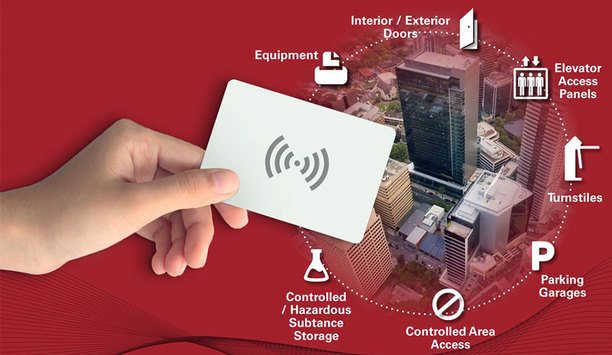
RFID and smartphone readers in physical access control
Download
Modern, flexible access control secures HafenCity University
Download
How to keep students safe on campus
Download
Video Surveillance: Lessons from the education market
Download
Best practices for integrating mobile into the access control architecture
Download
Access management in higher education
Download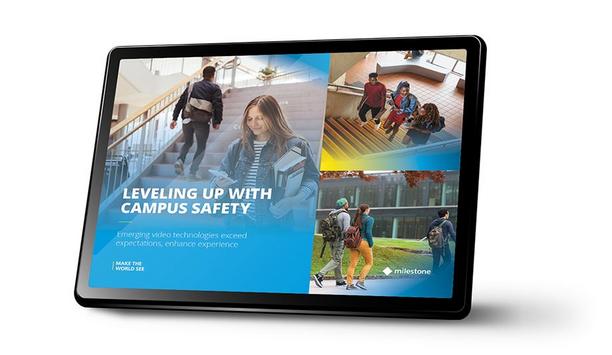
Levelling up with campus safety
Download
Understanding key control systems and best practices
Download
Assessing safety readiness for education campuses
Download
Public-private partnerships on campus: What you need to know
Download
Protecting dormitory residents and assets
Download
School security moves to the cloud
Download
Physical access control in higher education
Download
6 questions to ask when choosing a security system
Download
5 reasons to integrate mobile technology into your security solution
Download
RFID and smartphone readers in physical access control
Download
Modern, flexible access control secures HafenCity University
Download
How to keep students safe on campus
Download
Video Surveillance: Lessons from the education market
Download
Best practices for integrating mobile into the access control architecture
Download
Access management in higher education
Download
Levelling up with campus safety
Download
Understanding key control systems and best practices
Download
Assessing safety readiness for education campuses
Download
Public-private partnerships on campus: What you need to know
Download
Protecting dormitory residents and assets
Download
School security moves to the cloud
Download
Physical access control in higher education
Download


Using artificial intelligence (AI) to automate physical security systems
Download
A modern guide to data loss prevention
Download
7 proven solutions for law enforcement key control and asset management
Download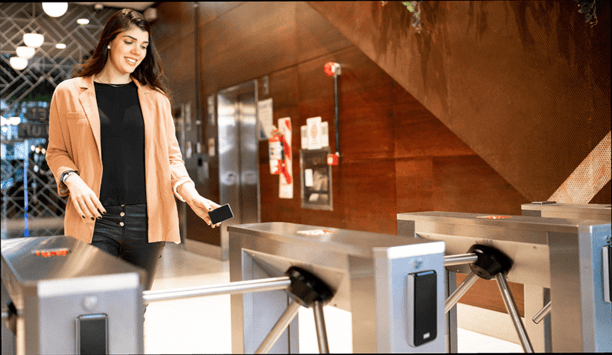
The truth behind 9 mobile access myths
Download
Access control system planning phase 2
Download

